|
|
Post by pjotr on Dec 10, 2017 22:20:04 GMT 1
The anthem of the Yiddish Bund, performed by the Workmen's Circle chorus, as a tribute to its last and most valiant partisan. Marek Edelman (1919 - 2009) was the youngest leader of the Warsaw Ghetto Uprising and one of its few surviving leaders. He remained in Poland for the rest of his long life and was able to play a significant role in the Solidarnosc movement to finally bring liberty to his long-suffering land. In his last years he spoke out in solidarity with the Palestinians, seeing the parallels between the Warsaw Ghetto and the Gaza Strip all too clearly. May God rest his soul.
The General Jewish Labour Bund in Poland, Algemeyner yidisher arbeter bund, Ogólno-Żydowski Związek Robotniczy was a Polish Jewish socialist party, it was anti-zionist, anti-communist and ant-fascist.
Youth movement Bund
Summer camp Bund and anti-semtic attack
|
|
|
|
Post by pjotr on Dec 10, 2017 22:20:20 GMT 1
|
|
|
|
Post by pjotr on Dec 10, 2017 23:22:08 GMT 1
 A meeting of the Bundist Youth Organization, Warsaw, Poland, 1932. A meeting of the Bundist Youth Organization, Warsaw, Poland, 1932. 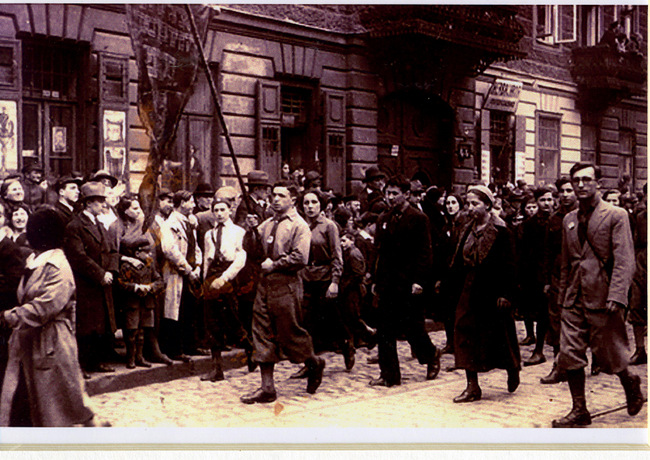 Members of the Jewish Labor Bund marching at a May Day demonstration in Warsaw. 1930s. Members of the Jewish Labor Bund marching at a May Day demonstration in Warsaw. 1930s. A Bund demonstration in Poland after the war A Bund demonstration in Poland after the war |
|
|
|
Post by pjotr on Dec 10, 2017 23:37:19 GMT 1
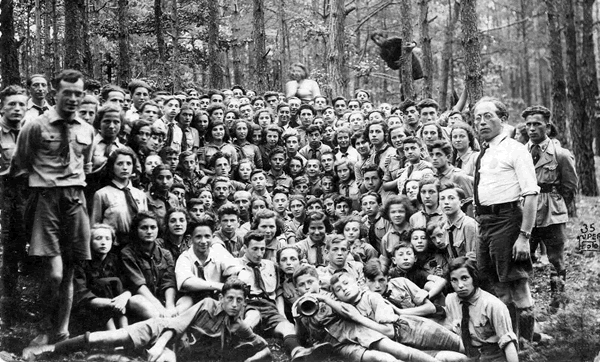 A camp for youngsters in the youth movement of the Bund, held near Warsaw General Jewish Labour Bund in Poland A camp for youngsters in the youth movement of the Bund, held near Warsaw General Jewish Labour Bund in PolandThe General Jewish Labour Bund in Poland (Yiddish: אַלגעמײַנער ײדישער אַרבעטער בּונד אין פוילין tr: Algemeyner yidisher arbeter bund in poyln, Polish: Ogólny Żydowski Związek Robotniczy) was a Jewish socialist party in Poland which promoted the political, cultural and social autonomy of Jewish workers, sought to combat antisemitism and was generally opposed to Zionism. Creation of the Polish BundThe Polish Bund emerged out of the General Jewish Labour Bund in Lithuania, Poland and Russia of the erstwhile Russian empire. The Bund had party structures established amongst the Jewish communities in the Polish areas of the Russian empire. When Poland fell under German occupation in 1914, contact between the Bundists in Poland and the party centre in St. Petersburg became difficult. In November 1914 the Bund Central Committee appointed a separate Committee of Bund Organizations in Poland to run the party in Poland. Theoretically the Bundists in Poland and Russia were members of the same party, but in practice the Polish Bundists operated as a party of their own. In December 1917 the split was formalized, as the Polish Bundists held a clandestine meeting in Lublin and reconstituted themselves as a separate political party. Electoral participationContrarily to the other Jewish parties, the Bund advocated an electoral cooperation with other Socialists, and not just between either Jewish parties or with other minority parties (in the electoral alliance " Bloc of National Minorities"). Thence, Agudat Israel (For religious Orthodox jews, a party loyal to the Polish government), Folkspartei (a liberal bourgeois party of the Polish jewish middle class) and the various Zionist parties were represented in the Sejm, but the Bund never was, mostly because its potential partner, the Polish Socialist Party ( PPS), was reluctant to appear as a pro-Jewish party. The party obtained 81,884 votes (0.9%) at the 1922 Sejm election, approximately 100,000 (0.7%) in the 1928 Sejm election and 66,699 at the largely rigged 1930 Sejm election.  “Zukunft” group - the youth arm of the “Bund” – a Jewish Socialist party which had broad support in PolandIn the autumn of 1933 the party issued a call initiated to the Polish public to boycott of goods from Germany, in protest of the Hitler regime “Zukunft” group - the youth arm of the “Bund” – a Jewish Socialist party which had broad support in PolandIn the autumn of 1933 the party issued a call initiated to the Polish public to boycott of goods from Germany, in protest of the Hitler regime. In December 1938 and January 1939, at the last Polish municipal elections before the start of the Second World War, the Bund received the largest segment of the Jewish vote. In 89 towns, one-third elected Bund majorities. In Warsaw, the Bund won 61.7% of the votes cast for Jewish parties, taking 17 of the 20 municipal council seats won by Jewish parties. In Łódź the Bund won 57.4% ( 11 of 17 seats won by Jewish parties). For the first time, the Bund and the PPS had agreed to call their electors to vote for each other where only one of them presented a list. This however did not go so far as common electoral lists. This alliance made it possible for a Left electoral victory in most great cities: Warsaw, Łódź, Lwow, Piotrkow, Kraków, Białystok, Grodno, Vilnius. After its municipal electoral successes in December 1938 and January 1939, the Bund hoped for a breakthrough at the parliamentary elections due in September 1939, but these were de facto cancelled by the German-Soviet invasion. OrganizationThe party organization was based on local and regional groups, which formed the lowest level of party cells. Each group had its local party committee. The highest authority of the Bund resided with the Party Congress, which elected the Central Committee and the Party Council, an advisory group. The Central Committee was composed of delegates designated by the larger local parties. In 1929 the organization of the party was changed. The Party Council was replaced by the Head Council, which was still organized by the Party Congress, but now the members of Council were selected from the members of the Central Committee. The party was a member of the Labour and Socialist International between September 1930 and 1940. Position towards emigration Marek Edelman Marek EdelmanIn Poland, the activists argued that Jews should stay and fight for socialism rather than emigrate. Marek Edelman once said " The Bundists did not wait for the Messiah, nor did they plan to leave for Palestine. They believed that Poland was their country and they fought for a just, socialist Poland, in which each nationality would have its own cultural autonomy, and in which minorities' rights would be guaranteed." When the Revisionist Zionist leader Vladimir Jabotinsky toured Poland urging the " evacuation" of European Jewry, the Bundists accused him of abetting anti-Semitism. Another non-Zionist Yiddishist Jewish party at the time in Lithuania and Poland was the Folkspartei. World War IIOn August 26, 1939, the party signed the joint statement of socialist parties in Poland, calling for the people to fight against Hitlerism (other signatories included the German Socialist Labour Party of Poland). After the 1939 German-Soviet invasion, the Bund continued to operate as an underground anti-Nazi organization in German-occupied Poland. Several Bund leaders and structures stayed in Soviet-occupied Poland and endured the Stalinist repression. Two most eminent Bund leaders, Wiktor Alter and Henryk Erlich were executed in December 1941 in Moscow on Stalin's orders under accusations of being agents of Nazi Germany.  Wiktor Alter Wiktor Alter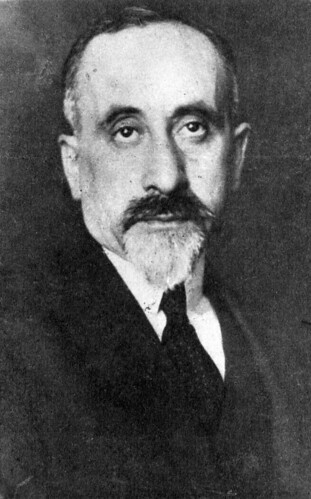 Henryk Erlich Henryk ErlichIn 1942, the Bundist Marek Edelman became a cofounder of the Jewish Fighting Organization (Polish: Żydowska Organizacja Bojowa, ŻOB; Yiddish: ייִדישע קאַמף אָרגאַניזאַציע) that led the 1943 Warsaw Ghetto Uprising, and was also part of the Polish resistance movement Armia Krajowa ( Home Army), which fought against the Nazis in the 1944 Warsaw Uprising. From March 1942, Samuel Zygelbojm, a member of the Bund Central Committee since 1924, was the Bund's representative on the National Council of the Polish government in exile in London. He committed suicide on May 12, 1943 to protest the indifference of the Allied governments in the face of the Shoah. Zygielbojm's seat in the Polish exile parliament was overtaken by Emanuel Scherer. 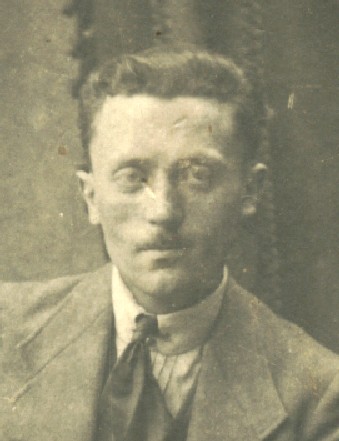 Samuel Zygelbojm, the Bund's representative on the National Council of the Polish government in exile in London Samuel Zygelbojm, the Bund's representative on the National Council of the Polish government in exile in LondonHowever, as a Bundist resistant later wrote, the situation differed between the government in exile and the National Polish Council inside Poland, even in July 1944: " The illegal National Council within the country consisted of four parties, the PPS, the Peasant party, the National Democrats, and the Christian Democrats. These groups were represented in the London parliament-in-exile. So was the Bund, represented first by Artur Ziegelboim and then by Emanuel Scherer. But in Poland the National Council would not accept a representative of the Bund." Post-World War IIAfter the end of the Second World War, the Bund reorganized itself in Poland. Whilst Zionists organized mass emigration to Palestine after the war, the Bund pinned its hopes to a democratic development in Poland. At the time the Bund had between 2,500-3,000 members. Around 500 lived in Łódź. Michal Shuldenfrei was the president of the party, Dr. Shloyme Herschenhorn the vice president. Salo Fiszgrund was the general secretary, assisted by Jozef Jashunski. The party had functioning branches in Warsaw, Łódź and Wrocław. The party ran three publications, Folkstsaytung, Yungt veker and Głos bundu (in Polish). The Bund began setting up various production cooperatives. Together with Jewish communists, the Bund was active in promoting Polish Jews to settle in areas in Silesia that were previously German territories. Antisemitic activities continued in Poland after the war, and in Łódź (the main centre of Jewish population in post-war Poland) the Bund retained a militia structure with a secret armory. The Bund took part in the Polish elections of January 1947 on a common ticket with the Polish Socialist Party ( PPS) and gained its first and only Sejm seat in its history, occupied by Michal Shuldenfrei (already a member of the State National Council since 1944), plus several seats in municipal councils. In 1948 around 400 Bund members illegally left Poland. The Bund was dissolved, along with all other non-communist parties, in 1948 following the consolidation of single-party rule by the Polish United Workers' Party. Schuldenfrei was then ousted from the Communist-led Parliament. In 1976, Marek Edelman, a former Bundist activist and leader during the Warsaw Ghetto Uprising, became part of the Workers' Defense Committee ( Komitet Obrony Robotników, KOR) and later part of the Solidarity trade union movement.[28] During the period of martial law in 1981, he was interned. He took part in the Round Table Talks and served as a member of parliament from 1989 until 1993. translate.google.nl/translate?hl=nl&langpair=en|nl&u=http://www.youtube.com/How the Bolsjewists killed Edelman's mother |
|
|
|
Post by pjotr on Dec 11, 2017 0:12:46 GMT 1
|
|
|
|
Post by pjotr on Dec 11, 2017 0:14:38 GMT 1
|
|
|
|
Post by pjotr on Dec 11, 2017 0:48:02 GMT 1
During Marek Edelmans funeral with a Polish military honour guard, the Bund flag was covering the coffin.
|
|
|
|
Post by pjotr on Dec 11, 2017 1:07:36 GMT 1
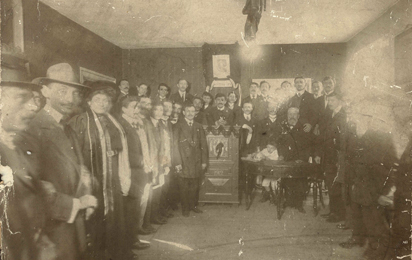 At a Bund meeting somewhere in Poland during the thirties At a Bund meeting somewhere in Poland during the thirties A Bund demonstration somewhere in Warsaw with Yiddish language authors and other Polish jewish intellectualsSzmul Zygielbojm A Bund demonstration somewhere in Warsaw with Yiddish language authors and other Polish jewish intellectualsSzmul Zygielbojm 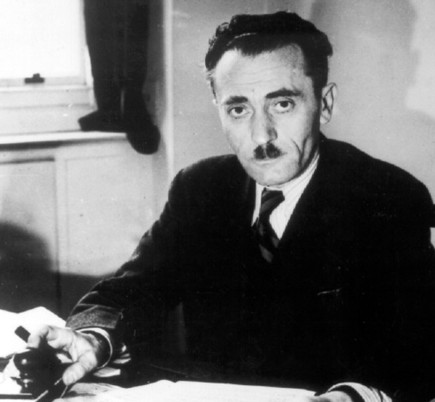 Szmul Zygielbojm Szmul Zygielbojm (Polish: [ˈʂmul zɨˈɡʲɛlbɔjm]; Yiddish: שמואל זיגלבוים; February 21, 1895 – May 11, 1943) was a Jewish-Polish socialist politician, leader of the Bund, and a member of the National Council of the Polish government in exile. He committed suicide to protest the indifference of the Allied governments in the face of the Holocaust. In his 20s, Zygielbojm became involved in the Jewish labor movement, and in 1917 he represented Chełm at the first Bundist convention in Poland. Zygielbojm so impressed the Bund leadership at the convention that he was invited to Warsaw in 1920 to serve as secretary of the Trade Union of Jewish Metal Workers and a member of the Warsaw Committee of the Bund. In 1924 he was elected to the Bund's Central Committee, a position he held until his death.  Szmul Zygielbojm Szmul ZygielbojmBy 1930, Zygielbojm was editing the Jewish labor unions' journal, Arbeiter Fragen (" Worker’s Issues"). In 1936, the Central Committee sent him to Łódź to lead the Jewish workers' movement, and in 1938 he was elected to the Łódź city council.  Szmul Zygielbojm is at far the lower right in this photo of the Bund's Central Committee at a 1929 conference. Szmul Zygielbojm is at far the lower right in this photo of the Bund's Central Committee at a 1929 conference.After Germany invaded Poland in September 1939, Zygielbojm returned to Warsaw, where he participated in the defense committee during the siege and defense of the city. When the Nazis occupied Warsaw, they demanded 12 hostages from the population to prevent further resistance. Stefan Starzyński, the city's president, proposed that the Jewish labor movement provide a hostage, Ester Iwińska. Zygielbojm volunteered in her place. On his release, Zygielbojm was made a member of the Jewish Council, or Judenrat, that the Nazis had created. The Nazis ordered the Judenrat to begin the creation of a ghetto within Warsaw. Because of Zygielbojm's public opposition to the order, his fellow Bundists feared for his safety and arranged for him to leave. In December 1939, Zygielbojm reached Belgium. Early in 1940, he spoke before a meeting of the Labour and Socialist International in Brussels and described the early stages of the Nazi persecution of Polish Jewry. When the Nazis invaded Belgium in May 1940, Zygielbojm went to France and then the US, where he spent a year and a half trying to convince Americans of the dire situation facing Jews in Nazi-occupied Poland. In March 1942, he arrived in London to join the National Council of the Polish government in exile, where he was one of two Jewish members (the other was the Zionist Ignacy Schwarzbart). In London, Zygielbojm continued to speak publicly about the fate of Polish Jews, including a meeting of the British Labour Party and a speech broadcast on BBC Radio on June 2, 1942. His booklet, written in English before his suicide in 1942 and titled " Stop Them Now. German Mass Murder of Jews in Poland", with a foreword by Lord (Josiah) Wedgwood, was his final attempt to focus world attention on what was happening to Jews in Europe. I must mention here that the Polish population gives all possible help and sympathy to the Jews. The solidarity of the population in Poland has two aspects: first it is expressed in the common suffering and secondly in the continued joint struggle against the inhuman occupying Power. The fight with the oppressors goes on steadily, stubbornly, secretly, even in the ghetto, under conditions so terrible and inhuman that they are hard to describe or imagine.... The Polish and Jewish population keep in constant touch, exchanging newspapers, views and instructions. The walls of the ghetto have not really separated the Jewish population from the Poles. The Polish and the Jewish masses continue to fight together for common aims, just as they have fought for so many years in the past.But his final letter was different and somber: The responsibility for the crime of the murder of the whole Jewish nationality in Poland rests first of all on those who are carrying it out, but indirectly it falls also upon the whole of humanity, on the peoples of the Allied nations and on their governments, who up to this day have not taken any real steps to halt this crime. By looking on passively upon this murder of defenseless millions tortured children, women and men they have become partners to the responsibility.
I am obliged to state that although the Polish Government contributed largely to the arousing of public opinion in the world, it still did not do enough. It did not do anything that was not routine, that might have been appropriate to the dimensions of the tragedy taking place in Poland....
I cannot continue to live and to be silent while the remnants of Polish Jewry, whose representative I am, are being murdered. My comrades in the Warsaw ghetto fell with arms in their hands in the last heroic battle. I was not permitted to fall like them, together with them, but I belong with them, to their mass grave.
By my death, I wish to give expression to my most profound protest against the inaction in which the world watches and permits the destruction of the Jewish people. |
|
|
|
Post by pjotr on Dec 11, 2017 18:31:45 GMT 1
  Lessons From the BundBy Samuel Farber A newly translated memoir takes us inside the Jewish Labor Bund's fight for survival and social transformation in 1930s Poland.In the 1930s, Jews constituted 9.5 percent of Poland’s population Lessons From the BundBy Samuel Farber A newly translated memoir takes us inside the Jewish Labor Bund's fight for survival and social transformation in 1930s Poland.In the 1930s, Jews constituted 9.5 percent of Poland’s population. The enormous pressure of European fascism and the dramatic growth of antisemitism politicized the country’s Jewish community, especially its younger members. They were drawn toward Bundism, Zionism, and Communism in massive numbers. By the end of the decade, the Bund had become the hegemonic union and political force among Polish Jews. Founded in 1897 as the General Jewish Labor Bund in Russia and Poland, the Polish Bund became a separate organization during World War I, when opposed occupying armies cut off communication between the Polish and Russian chapters. In the interwar years, the Polish Bund’s success came from its call to maintain cultural autonomy, including preserving Yiddish language and culture, its aggressive defense of the Jewish community, and its labor militancy. Unlike Zionism, the Polish Bund insisted, under its doctrine of “ hereness” ( doikayt in Yiddish), that the right place for Jews was where they already lived. Trying to escape antisemitism by moving to Palestine — which, it reminded its members, was not empty land — and establishing a Jewish state would be unjust and provoke resistance. Instead, Jews had a duty to fight in alliance with the labor movement and with socialist organizations to establish a democratic republic in Poland. Wikipedia quote by Pieter:In Poland, the Bund activists argued that Jews should stay and fight for socialism rather than emigrate. Marek Edelman once said " The Bundists did not wait for the Messiah, nor did they plan to leave for Palestine. They believed that Poland was their country and they fought for a just, socialist Poland, in which each nationality would have its own cultural autonomy, and in which minorities' rights would be guaranteed.". When the Revisionist Zionist leader Vladimir Jabotinsky toured Poland urging the " evacuation" of European Jewry, the Bundists accused him of abetting anti-Semitism. Another non-Zionist Yiddishist Jewish party at the time in Lithuania and Poland was the Folkspartei. End wikipedia quote!The Bund’s demands for cultural autonomy put it on a collision course with the Russian Social Democratic Party ( RSLDP), which it had joined in 1898. When its demands for autonomy were rejected in 1903, the Bund split and reestablished its separate existence. Admittedly, some of the Bund’s demands — such as becoming the exclusive representative of all Jewish workers no matter what language they spoke or where they lived — could not be justified. But Bolsheviks and Mensheviks, influenced by their assimiliationist expectations, refused to treat Jews like other national groups within the empire. By the 1930s, the Bund was successfully recruiting left-wing support not only because of its defense of Jewish culture, but also because of its combative social-democratic line, which appeared as an alternative both to Stalinism and Zionism. Bernard Goldstein richly portrays the organization’s history during those fateful interwar years in his recently translated memoir, Twenty Years with the Jewish Labor Bund. There, he speaks both as a Bund member and as head of its Warsaw militia. Taken with The Stars Bear Witness — his account of life in the Warsaw Ghetto and its 1943 rebellion, led by a coalition of Bundists, Zionists, and Communists organized into the Jewish Fighting Organization ( Żydowska Organizacja Bojowa, ŻOB) — Goldstein covers the Bund’s rise and fall. Only a few of them survived amongst them the later Polish doctor and KOR & Solidarność activist Marek Edelman. Comment Pieter the other group of fighting jews was the more rightwing Jewish Military League (Polish: Żydowski Związek Wojskowy, ŻZW), formed primarily of former Polish Jewish officers of the Polish Army in late 1939. Due to the ŻZW's close ties with the Armia Krajowa ( AK), which was closely linked to the Polish Government in Exile, after the war the Soviet-dependent People's Republic of Poland suppressed publication of books and articles on ŻZW. Its role in the uprising in the ghetto was downplayed, in favour of the more socialist Żydowska Organizacja Bojowa ( Jewish Fighting Organization).  The flag of the Jewish Fighting Organization, ŻOB, in the Warsaw Ghetto uprising in 1943Warsaw jews fought until their death against the Waffen-SS in the Warsaw Ghetto The flag of the Jewish Fighting Organization, ŻOB, in the Warsaw Ghetto uprising in 1943Warsaw jews fought until their death against the Waffen-SS in the Warsaw Ghetto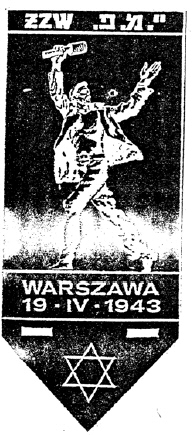 A poster of the Żydowski Związek Wojskowy, the Jewish Military League, in the Warsaw Ghetto of 1943. A poster of the Żydowski Związek Wojskowy, the Jewish Military League, in the Warsaw Ghetto of 1943. The flag of the Jewish Military Union, ŻZW, who fought together with the Jewish Fighting Organization, ŻOB, and units of the Armia Krajowa (Home Army) during the the Warsaw Ghetto uprising in 1943A Well Regulated MilitiaGoldstein The flag of the Jewish Military Union, ŻZW, who fought together with the Jewish Fighting Organization, ŻOB, and units of the Armia Krajowa (Home Army) during the the Warsaw Ghetto uprising in 1943A Well Regulated MilitiaGoldstein’s account explodes the Zionist narrative that contrasts brave Israeli warriors with meek and submissive Eastern European Jews. As Goldstein relates, from 1905 until the early 1920s, the Jewish Bund engaged in self-defense as the need arose. Members would create ad hoc security forces for events and demonstrations or to ward off attacks. But as antisemitism and conflicts with Communists grew, the Bund’s central committee decided to organize a permanent militia, naming Goldstein to head it. The new militia traced its roots to the Zelbst-shuts ( self-defense) units that had participated in the 1905 Russian Revolution. Goldstein describes his newly formed militia’s discipline. Its members could not use firearms unless specifically ordered to do so nor could they act on their own to seek revenge for attacks. According to Goldstein, the party established these rules to prevent the militia from degenerating into outright banditry, as some revolutionary groups in tsarist Russia, like the Socialist Revolutionary Party ( SRP) and the Polish Socialist Party ( PPS), did. Further, the Bund did not grant the militia any special privileges and in fact imposed stricter rules on them than on other party members. Militia members had to pay party dues and, like other Bundists who had to miss work to fulfill a party assignment, were not compensated for lost wages while on duty. The militia had its own sick fund to take care of those who had been wounded on duty. Occasionally, the militia went beyond self-defense and behaved more proactively. Goldstein recounts instances when he tried to stop evictions by negotiating with landlords. When it didn’t work, militiamen appeared in the building’s courtyard, waited for the authorities to move the tenant’s possessions into the street, and then carried them back to the apartment once the bailiff and police had left. They repeated the whole operation until the landlord agreed to work out a compromise. The Bund militia grew at the same pace as the Bund’s political influence. By 1939, as many as twenty thousand people attended Bund rallies with some two thousand militia members guarding them. Goldstein details the militia’s exhaustive defense preparations: for marches, members would station themselves in every tenth rank. Other groups positioned throughout the crowd would watch people on the side streets and look out for police or hostile counterprotesters. The militia also expanded in response to the new waves of antisemitism that swept Poland after the Second Republic’s founding in 1918. For one, the Bund had to deal with Haller’s Army, followers of the nationalist war hero Józef Haller, who used to beat up Jews and cut off the beards of the pious in the streets of Warsaw and in provincial towns. The police also took a hostile stance to the Bund, ransacking and seizing their clubs and offices, as they did in the Warsaw suburb of Praga in 1 920. The Bund also violently clashed with religious Jews when, in 1922, it decided to publish a Saturday edition of their newspaper Folkstsaytung, violating the Sabbath rest. Antisemitism became an even greater threat in the 1930s thanks to Hitler’s rise and Poland’s increasingly dictatorial and nationalist government. Physical attacks on Jews increased, and pogroms reappeared. Polish students, strongly influenced by Polish Nazism (National Democracy, Phalanga, Oboz Narodowo Radykalny-Falanga, ONR-Falanga), established a ghetto for Jews at the university, forcing them to sit on specially assigned benches on the left side of the classrooms. The Polish government sanctioned this practice in 1937, decreeing it the law of the land. In response, all Jewish parties joined the Bund in declaring a general strike. The Bund and the CominternWhile fighting antisemitism, the Bund militia also had to deal with the Communist International. After the 1917 Russian Revolution and especially following the Comintern’s 1919 founding, serious tensions developed between the Communists and the Bund, eventually fracturing the party. The pro-Communist faction, called the Kombund, represented a substantial part of the membership. It demanded that the Bund accept all twenty-one conditions that the Comintern had stipulated for party membership. The three other factions — the left-wing majority, the centrists, and the small right-wing faction that eventually joined the center — refused to accept several of the twenty-one conditions. As a result, the Kombund defected and joined the Communists. The two parties had to compete for Jewish workers’ allegiance and remained in sometimes violent conflict with each other. These occasional clashes did not prevent the Bund’s open opposition to the war craze that swept Poland after World War I, as nationalist forces called for extending the nation from the Baltic to the Black Seas at the expense of revolutionary Russia. In fact, Henryk Erlich, one of the Bund’s main leaders, spoke at the Warsaw city council to demand that the government repudiate plans to capture Ukraine and instead seek an immediate and just peace with Soviet Russia. Amid this turmoil, Goldstein reports that the Bund jointly participated with the Communists and with the Polish Socialist Party ( Polska Partia Socjalistyczna, PPS) in the 1920 Warsaw May Day parade. Whatever friction and violence excited up to this point pales in comparison to what happened after 1928, when Stalin and the Comintern adopted the ultra-left “ Third Period” policies. Inside the Soviet Union, this justified the first Five Year Plan, which mercilessly crushed the peasantry and created the 1932–33 Ukrainian famine ( Holodomor) to advance Stalin’s forced industrialization. Internationally, the period represented an ultra-sectarian line that denounced all other left political groups and attacked social democrats as social fascists. This policy, together with the German Social Democratic Party’s ( SPD) timid and conservative politics, opened the door for Hitler’s rise to power. Since the Bundists were also social democrats — albeit far more combative than the SPD — Third Period Communists unleashed an all-out war against them. This included attempts to split Bund-led unions by calling for wildcat strikes without any justification or worker support, which frequently entailed physically attacking the uncooperative workers. Goldstein describes the tailors’ wildcat strike, which the Communists forced in the summer of 1930 and ended with severely injured workers. Beyond those reckless actions, Goldstein describes assaults on Bund institutions, like the Medem Sanitarium for children. In 1931, 150 Jewish and Polish Communists attacked it, destroying the electrical station and kitchen, breaking all the windows, and engaging in a wild shooting spree. Fortunately, all the children had been evacuated. Communist persecution of the Bund did not stop with Stalin’s adoption of the Popular Front policy in 1935 or his subsequent national-unity policy against Nazism. It continued for years, and took the lives of two Bund leaders: Henryk Erlich and Victor Alter. Alter was executed, and Erlich driven to suicide by the Soviet authorities in 1943. 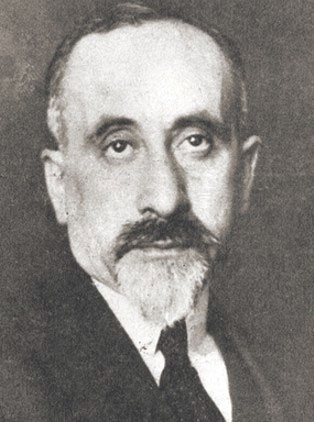 Henryk Erlich Henryk Erlich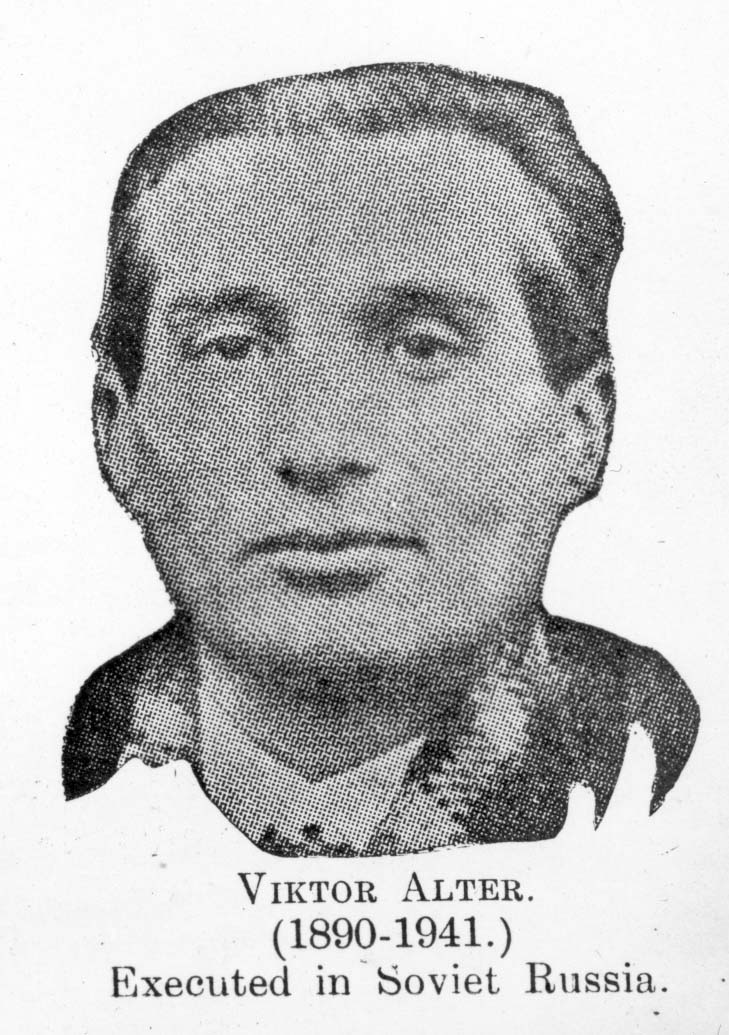  Victor AlterWorking-Class UnityThe Bund’s leaders Victor AlterWorking-Class UnityThe Bund’s leaders realized that its militia alone could not protect its members from Communist excesses or from the far more important problem of Polish antisemitism, which affected the Jewish community at large. That is why they — even if they were not revolutionary Bolsheviks — argued for the unity of the Polish working class while advocating for the Jewish minority’s special cultural and national demands, including that “ each union in any city with a large Jewish component should be required to form a separate Jewish affiliate.” To accomplish this, the Bund had to face the power that nationalism and antisemitism had over non-Jewish workers. Goldstein portrays these tensions by telling a story of bloody worker conflict in the slaughterhouses. Private merchants bought most of the meat, but the municipal and national governments, public hospitals, and the military were clients as well. The Polish workers maintained that, as ethnic Poles, they should get a larger share of the government work, a claim the Jewish workers obviously disputed. At one point the conflict almost turned into a nightmare, as workers lined up on either side ready to use their butcher knives against each other. The dispute was resolved only after Goldstein, acting on behalf of the Jewish union, persuaded the Polish union’s secretary, a member of the PPS — a non-Marxist and nationalist-inclined socialist party — to jointly address the workers and convince them to lay down their weapons and settle the dispute.While one might object to organizing a union along ethnic lines, the practice undoubtedly came in response to the systemic discrimination — from both private and public employers — that Jewish workers faced. Goldstein provides a detailed example of this at the Central Provisions Administration Office, which once employed some two hundred Jewish workers. Soon after the Warsaw City Council took over the office, it began to dismiss its Jewish employees, claiming that the office was gradually being liquidated. With the help of PPS and Communist workplace activists, the Bund mounted a successful campaign against the discriminatory layoffs. Goldstein’s description makes it clear that the Bund conducted much of its work in collaboration with the PPS, despite the latter’s reluctance to identify as a pro-Jewish party. For this and other reasons, relations between the two organizations wavered, but they improved significantly in the 1930s, during Jozef Pilsudski’s increasingly dictatorial regime. Pilsudski, a one-time PPS leader, dealt serious blows to his former party and to the democratic opposition in general. As a result, the Bund and PPS jointly organized the 1931 May Day demonstration. Among other dramatic incidents in which the Bund, unionized Polish workers, and the PPS came together, Goldstein describes their open fights against fascist and antisemitic demonstrations in Warsaw’s Saxon Gardens and their successful effort to stop a pogrom in the city of Brisk. The Bundist Brand of UnionismAs a party in the classic social-democratic mold, the Bund built a dense counter-society within antisemitic and reactionary Poland that could encompass every aspect of Jewish life. The party had sections for youth ( Tsukunft), women ( Yidishe Arbeter Froy), and even children ( SKIF or the Union of Socialist Children). It had a Yiddish-speaking school system, a sports and athletic section, and a sanatorioum for children named after Vladimir Medem, one of its leading founders. As a Marxist party, however, its central priority was organizing the Jewish working class. Goldstein’s book brings to light one important aspect of the Bund-led unions: their odd combination of modern and traditional practices. On the one hand, they experienced the very modern conflict between centralization and autonomy. Goldstein explains that the Warsaw unions demanded control of locals in the Praga suburb, hoping to collect their members’ dues and organize their activities centrally. The Praga unionists objected and demanded more autonomy. The Warsaw unions eventually allowed their suburban affiliates to take dues and address local issues — like negotiations and limited strikes. But Warsaw retained control over industry-wide strikes and general demands, requiring the Praga unions to submit to the central office on those issues. These modern disputes mixed with instances of extremely traditional craft unionism. For example, Goldstein explains that the slaughterhouse union was split into separate locals according to an extremely detailed division of labor. There were separate groups for the drivers who moved the cattle and other animals from the train to the stalls, the skinners, the hide haulers and the meat haulers, the record-keepers, the teamsters who delivered to the butcher shops, the tripe workers, and those who worked only with calves. While this archaic organization did not contribute to union solidarity, other traditional union traits did. For example, the slaughterhouse locals worked on a cooperative basis: everything they earned went into a pool and, at the end of each week, the proceeds were distributed according to rules that stressed need. For example, an unmarried man, regardless of his qualifications, received a smaller share than a married man. The back porters — workers who transported burdens on their backs — improvised their own social security system. A sick porter continued to receive his share of the pool; if he died, the vacant spot went to his son or son-in-law; if there was no son or son-in-law to take his place, the porter’s station paid the widow a weekly pension for one year. In many other craft trades, especially among bakers, fully employed workers gave up their overtime hours to their unemployed comrades. The Bund sanctioned these practices, which were rooted in a precapitalist moral economy, but resisted others that violated that morality. For example, the slaughterhouse owners tolerated the workers’ practice of stealing a little meat for household consumption. When some porters took two bundles of leather from a small merchant in order to sell them, however, the Bund forced them to return the product. Goldstein points out that the public received this very well, helping the Bund’s image. Off the Shop FloorGoldstein also shows that the Bund did not confine its attention to a narrowly defined Jewish working class. Polish Jews experienced deep and extensive poverty; Jewish beggars tried to survive all over Warsaw; and many Polish Jews, particularly women, never learned to read. The Jewish working class in Warsaw lived side by side with a world of marginalized people into which workers and their families could easily fall. The Bund did not ignore that world. Goldstein writes about how, in order to develop contacts among the Jewish transport workers in Praga, he attended a wedding of known thieves. He also describes visiting a synagogue frequented by criminals, pimps, sex workers, and other underworld characters who were allowed to pray there between the Jewish New Year and Day of Atonement. Goldstein’s memoir makes clear that the Bund did not pander to and romanticize this world, nor did it condescend with moralizing self-righteousness. Instead, it always attempted to bring its inhabitants into what, as Goldstein put it, was a world of new ideas and concepts, a new culture, a new way of thinking and talking, and new and broader interests. In short [to become] aware of general social problems and a different way of life, things they were never before concerned with or had even thought about. Yet in offering its model of an alternative society, the Bund ran into some unanticipated obstacles. Goldstein tells the story of a Bund activist who got so involved in his union that he increasingly distanced himself from his illiterate wife, who was left isolated at home tending to their children and household duties. After the wife contacted Goldstein, he approached the husband, who explained that he had nothing to talk to his wife about. Goldstein discovered that the wife had gotten a tutor, learned to read, and wanted to join the Bund, but the husband did not want his wife to become an activist. Goldstein tried to persuade him but concluded that somehow these two things could not coexist in [the husband’s] mind: the Socialist program about equality for women and the fact that his wife leaves the house several times a week to attend meetings of the YAF [the Bund’s women’s organization], and that he must sit at home and watch the children. Goldstein’s own conception of the Bund was somewhat contradictory as well. He affirms, on one hand, that the organization never confined itself to socialist mass struggle: “ We concerned ourselves with the personal problems of the workers’ lives as well.” A few pages later, however, he tells a member’s wife — who complains that her husband does not contribute to household finances — that the Bund “ cannot mix into people’s private affairs,” an answer readers might expect from a modern socialist party organizer. The woman’s reply, however, got straight to the point: “ Comrade Bernard, to whom can I go? Who can help me? . . . Let him at least give the household something to live on.” In the end, Goldstein appealed to the husband’s brothers, who successfully pressured him into discharging his financial responsibilities. The grateful woman became an ardent election campaigner for the Bund. Jewish working-class life had converted Bund organizer Goldstein into a part-time rabbi and social worker. The Rise Before the FallThe Bund’s hegemony took on many forms. In the 1930s, one hundred thousand Jewish workers belonged to unions, meaning that one-quarter of all unionized workers in Poland were led by the Bund, giving them enormous power. For example, it led the 1936 general strike against the Przytyk pogrom ( en.wikipedia.org/wiki/Przytyk_pogrom ). All Jewish workers left work, Jewish stores shut down, and pupils walked out of school. Electorally, the Bund started to make headway in the kehilla — Jewish community council — elections in 1936 and later in the 1938 Warsaw City Council elections. Out of twenty Jewish councilmen, seventeen candidates associated with the Bund were elected. Similar results came in from Łódź, Wilno, Lublin, Białystok, Grodno, Piotrków, Tarnow, and other cities. The Bund also performed well in municipal elections held in January 1939. An agreement with the PPS facilitated these successes. Each party called on their bases to support the other when only one had presented a slate. In light of its excellent results in local elections, the Bund hoped to do very well in the parliamentary elections that were supposed to take place in September 1939. They were, of course, preempted by the German invasion that began on September 1 and by the Soviet invasion just two weeks later. Thus, the Nazi genocide of the Jewish community in Poland, Eastern Europe, and elsewhere began. While in 1933 there had been three million Polish Jews, by 1950 only forty-five thousand remained. The threat of pogroms and the harsh realities of the new Stalinist regime reduced this group even further within a few years. In the immediate postwar period, large numbers of Jewish refugees waited for visas to the United States and other capitalist democracies. By and large, these countries refused to admit them, and many ended up in Palestine, joining the substantial number of German Jews who had already fled there. This played a key role in building the hegemony of Zionism over Jewish communities all over the world. The original settlers only had the support of a minority current of Jewish opinion, competing against both leftist and religious parties. But the horrors of the Holocaust and the plight of Jewish refugees granted a new international legitimacy to the Zionist project. At the same time, as its social base had been virtually exterminated, the Bund ceased to exist as a mass movement. Still, the Left would do well to learn from the Bund, as it combined the defense of an oppressed community with broad worker alliances, mixing anti-discriminatory and pro-worker activism into an effective and popular political force. About the Author Samuel Farber Samuel FarberSamuel Farber was born and raised in Cuba and has written extensively on that country. His newest book, The Politics of Che Guevara: Theory and Practice, is out now from Haymarket Books. Source: Jacobin is a leading voice of the American left, offering socialist perspectives on politics, economics, and culture. The print magazine is released quarterly and reaches over 30,000 subscribers, in addition to a web audience of 1,000,000 a month. |
|
|
|
Post by pjotr on Dec 12, 2017 17:30:49 GMT 1
 The Rise and Fall of the Jewish Labor BundNazism and Stalinism Delivered Blows; Ideology Did the Restby Philip MendesFrom the Autumn, 2013 issue of Jewish CurrentsThe Jewish Labor Bund The Rise and Fall of the Jewish Labor BundNazism and Stalinism Delivered Blows; Ideology Did the Restby Philip MendesFrom the Autumn, 2013 issue of Jewish CurrentsThe Jewish Labor Bund was one of the most important leftwing Jewish political organizations of the late 19th and early 20th centuries. It played a key role in the formation of the Russian Social Democratic Labor Party well before its split into Menshevik and Bolshevik factions, and was influentially active in the 1905 Russian Revolution while emerging as a leader of Jewish self-defense against Tsarist pogroms. While the Russian wing of the Bund was destroyed by the Bolsheviks, the Polish Bund remained influential between the two world wars, and Bundist ideas traveled with Jewish emigrants to influence socialist movements throughout the world. Of course, the Holocaust eliminated the mass Jewish labor movement in Poland, and then the post-war Communist takeover destroyed the Bund politically. While the organization later regrouped as a world federation, it survives today as only a marginal movement in Jewish cultural and political life. Even its historical and political significance is recognized by only small numbers of Jews and progressives. Yet the Bund’s experience as an ethnic and class-based organization arguably encapsulates both the strengths and limitations of the historical, once-prominent Jewish engagement with socialist ideas and movements. The Bund was an internationalist organization that shared the core belief of all Marxist groups in a common class struggle aimed at achieving the liberation of all workers, whatever their national or religious origin. The Bund nevertheless insisted that Jews were a distinct national group, and that while Jewish workers should prioritize alliances with other socialists to advance the revolutionary cause, a separate Jewish socialist organization was required to adequately represent the national, cultural needs of working-class Jews in Eastern Europe. The Bund opposed assimilation, defended Jewish civil and cultural rights, and campaigned actively against anti-Semitism. However, the Bund’s socialist universalism precluded support for the notion of Jewish national unity ( klal yisrael) or for the narrow advancement of Jewish sectional interests. It eschewed any automatic solidarity with middle-or upper-class Jews, and generally rejected political collaboration with Jewish groups representing religious, Zionist or conservative viewpoints. The Bund’s famous anthem, known as “ The Oath” ( di shvue in Yiddish), composed by the Yiddish poet and cultural researcher Shloyme Zanvl Rappoport (1863 – November 8, 1920) in 1902, made no specific reference to Jews or Jewish suffering. 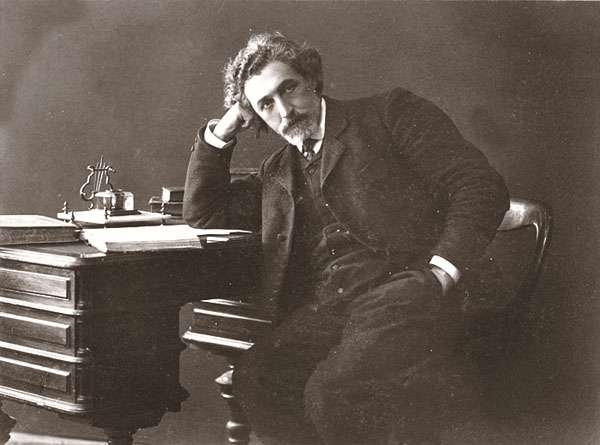 Shloyme Zanvl Rappoport (1863 – November 8, 1920), known by his pseudonym S. Ansky (or An-sky), was a Belarusian Jewish author, playwright, researcher of Jewish folklore, polemicist, and cultural and political activist. He is best known for his play The Dybbuk or Between Two Worlds, written in 1914. Ansky was also the author of the song Di Shvue (The Oath), which became the anthem of the Jewish Socialist Bund party. He was the author of the poem (later made into a song) "In Zaltsikn Yam" (In the Salty Sea), which was dedicated to the Bund as well. Shloyme Zanvl Rappoport (1863 – November 8, 1920), known by his pseudonym S. Ansky (or An-sky), was a Belarusian Jewish author, playwright, researcher of Jewish folklore, polemicist, and cultural and political activist. He is best known for his play The Dybbuk or Between Two Worlds, written in 1914. Ansky was also the author of the song Di Shvue (The Oath), which became the anthem of the Jewish Socialist Bund party. He was the author of the poem (later made into a song) "In Zaltsikn Yam" (In the Salty Sea), which was dedicated to the Bund as well. The Bund’s determination to be both militantly socialist and Jewish often left it politically isolated, accused of being ideologically purist and sectarian and unwilling to engage in pragmatic alliances with either moderate socialists or non-socialist Jews to achieve political power. Still, the Bund’s perspective arguably reflected the real experiences of its working-class constituency. Jews in Tsarist Russia and Poland between the wars were heavily divided by economic and social factors, with Jewish workers employed almost exclusively by Jewish employers, due to the anti-Semitism of their neighbors. As a result, the class struggle of Jewish workers was principally an internal Jewish class war. There was no united Jewish nation, and the Bund could not help seeing many Jews as the class enemy. The Bund was disappointed by the failure of broader socialist groups to display active solidarity with persecuted Jewish workers or with the Bund’s consistent internationalist values. Tensions between the Bund and the Polish Socialist Party as well as the Bolsheviks/Communists (under their various titles in Russia and Poland) reflected the Bund’s concern that the specific rights of Jewish workers were being subordinated either to Polish nationalist concerns or to wider socialist agendas. This was why the Bund remained organizationally independent of these larger movements. The Bund was formed in Lithuania, Poland, and Russia in 1897 — the same year as the first Zionist Congress in Basel, Switzerland — and initially demanded only equal civil rights for Jewish workers as individuals and an end to anti-Jewish discrimination. Over time, however, the Bund also sought recognition of Jewish national rights, though it remained unalterably opposed to Zionism. “ etween Zionist activity and Socialist activity,” declared Vladimir Medem, one of the Bund’s foremost ideological leaders, in 1920, “there is a fundamental and profound chasm. . . . A national home in Palestine would not end the Jewish exile. . . . All that would change would be the belief of Jewry in its future — the hope of the Jews in exile — the struggle for a better life would be snuffed out.”  Vladimir Medem, one of the Bund’s foremost ideological leaders Vladimir Medem, one of the Bund’s foremost ideological leadersIndeed, the Bund articulated the principle of doikayt (“ hereness”) — that is, the preservation of Jewish life and the struggle for liberation wherever Jews live — and advocated national-cultural autonomy for Jews within a multi-national state ( Poland). This perspective was concisely summarized as “ nationhood without statehood,” and differed sharply from the Zionist concept. The Bund achieved considerable success in its early years, and attracted an estimated 30,000 members by 1903 and 40,000 supporters by 1906, which made it the largest socialist group in the Russian Empire. The organization arguably reached the peak of its influence during the 1905 Russian revolution, when it demanded an improvement in living standards, a more democratic political system, and the introduction of equal rights for Jews. The organization was active in initiating mass strikes and demonstrations in cities with large Jewish populations such as Lodz, Riga, Vilna, Warsaw, Odessa, and Bialystok. The Bund also played a lead role in organizing and hosting the 1898 founding Congress of the Russian Social Democratic Labor Party ( RSDLP). However, the Bund’s relationship with the broader socialist movement collapsed five years later over the question of Jewish nationalism. At the 1903 RSDLP congress, the Bund sought formal recognition as the sole representative of the Jewish proletariat without geographical limits, and also proposed a federated party based on the multi-national model of the Austrian Socialists. The Bolshevik leader Vladimir Lenin vehemently rejected the notion of Jewish national culture, arguing that the concept was inherently reactionary and that the only solution to anti-Semitism was the progressive assimilation of Jews into the broader population. Ultimately, the Bund was forced to leave the RSDLP. Although Lenin agreed, for tactical reasons, to permit the re-entry of the Bund into the party in 1906 and to accept their claim to exclusive representation of Jewish workers, the Bolsheviks continued to reject the notion of Jewish national culture (as reflected in Joseph Stalin’s 1913 report, “ Marxism and the National Question”) and to accuse the Bund of fomenting separatist tendencies. During the February 1917 revolution, the Bund played an active part as allies of the Mensheviks. Leading Bundists such as Mark Liber, Raphael Abramovich, and Henryk Erlich held prominent positions in the various workers and soldiers’ councils known as soviets, and large numbers of Bundists were elected to local city councils. Following the Bolshevik takeover in October, a Bundist minority led by Vladimir Medem rejected Lenin’s rule as undemocratic and antipathetic to Jewish national rights, but the majority agreed to join the Communist Party. The Bund was then formally dissolved by the Bolsheviks in 1921, with remaining members either fleeing abroad or facing persecution by the Bolshevik regime. Mark Liber and many other Jewish Bundists would be executed in the Stalinist purges.  In Poland, on the other hand, the Bund voted in 1920 against accepting the twenty-one conditions for affiliation with the international communist body, the Comintern, which the Bund called, in a resolution, “ ideologically bankrupt” and playing “ a deleterious role in the labor movement.” Instead, the Bund affiliated with the Socialist or ( Social-Democratic) Second International, and established its own version of Jewish national-cultural autonomy in Poland, forming a large social, cultural and political Yiddish infrastructure that included trade unions, secular Jewish day schools, sporting associations, libraries, newspapers, youth and women’s groups, and health centres such as the famous Medem Sanatorium for children with tuberculosis. A video from 1936 of the famous Medem Sanatorium for children. Much of the personnel and children of the Sanatorium were transported to the extermination camp Treblinka in 1942. It is nearly hard to watch this Yiddish Bundist propagada video when you realise that a few years later most of these beautiful children were dead.Itzhak Luden, z"l – editor of Lebns-Fragn (Yiddish Bundist journal) – sings some of the parody songs written by children about the Medem Sanatorium, an educational institution for children at risk of tuberculosis run by the Yiddish secular school system in the interwar period.  Ukranian Bundists mourning members of their self-defense group who were killed in a 1905 anti-Tsarist uprising Ukranian Bundists mourning members of their self-defense group who were killed in a 1905 anti-Tsarist uprisingBy the mid-to-late 1930s, the Bund was the strongest Jewish political organization in Poland and secured major victories in Jewish communal and Polish municipal elections. One of the key reasons for the Bund’s strength was its active opposition to anti-Semitism, with public rallies, strikes, and self-defense groups that repositioned the Bund as representing the concerns of the broad Polish Jewish population rather than only a narrower swath of Jewish workers. To be sure, the Bund still rejected formal alliances with other Jewish political forces, Zionist or religious, but it joined with other progressive groups within Polish society to oppose anti-Semitism and seek the establishment of socialism. There would be “ no end to persecution [of Jews],” wrote the Bundist leader Victor Alter wrote in 1937, “ unless there is a simultaneous freeing of the Polish masses from social oppression. . . . Your liberation can only be a by-product of the universal freeing of oppressed people.”  During the Holocaust, the Bund remained reluctant to form specifically Jewish rather than broader socialist political alliances. Bundists also preferred to avoid any unified action with Communists. However, these principles clashed with political reality, given that the Nazis were uniquely targeting all Jews for genocide. With the Polish Socialist Party unable or unwilling to provide significant military assistance, the Bund eventually joined with Zionists, Communists, and other Jews to lead anti-Nazi resistance in a number of ghettos, including Warsaw, Vilna, and Bialystok. The Bund lost most of its members and supporters in the Holocaust. The Bundist member of the Polish Government-in-exile in London, Szmul (Artur) Zygielbojm, committed suicide to protest the world’s passivity about the extermination of the Jewish people. Surviving Bundists attempted to regroup in post-war Poland, but were suppressed by the Communist government. Most Bund leaders emigrated to other countries by early 1949.  Zygielboim’s suicide note Zygielboim’s suicide noteThe largest Bundist presence outside Central Europe was in the United States. The first Bund branch in America was established in 1900, and by 1904 a Central Union of Bund Organizations was formed to raise funds and organize lecture tours. During the 1905 Russian revolution, American Bundists raised $5,000 a week for several months to assist their colleagues in Russia. Bundists also played a major role in forming key American Jewish labor-movement parties, organizations, and Yiddish-language publications, including the still extant Workmen’s Circle and the Forward newspaper. Significant American labor leaders such as Sidney Hillman and David Dubinsky were Bundists. American Bundists also contributed significantly to the funding of Polish Bundist institutions; it has been estimated that American Bundists forwarded $91,000 to the Polish Bund between 1934 and 1939. Bundists played a lead role in forming the Jewish Labor Committee in 1934, to defend Jewish rights and counter the growth of Nazism. Headed by Baruch Charney Vladeck, the Committee provided emergency visas to European socialists ( mainly Jews, including many prominent Bundists who had found temporary refuge in Lithuania) to enable them to flee the Nazis. After World War II, the Committee helped Holocaust survivors rebuild their lives. It should be noted, however, that prior to World War II the Bund never constituted itself as an international Jewish socialist organization per se. Rather, the many Bund groups worldwide viewed themselves first and foremost as off-shoots of the Russian and later Polish Bund. It was only in 1947, following the Holocaust and the imminent dissolution of the Polish Bund, that Bund leaders in New York elected to form a World Coordinating Committee of Bundist Organizations. This new body vowed to defend Jewish economic and cultural concerns including the right to national identity. Even then, a significant minority opposed the decision to internationalize on the grounds of doikayt. The Bund’s ideological hostility towards all forms of Zionism lasted much longer than the anti-Zionism of many other socialist (and mainstream Jewish) groupings. One of the main reasons for this antipathy was that Bundists and Zionists competed for the same constituency in Russia and Poland. The Zionist movement’s advocacy of large-scale Jewish emigration to a proposed homeland in Palestine also clashed directly with the Bund’s insistence that anti-Semitism should be fought and defeated within all the countries in which Jews lived. More generally, the Bund’s universalist emphasis on the joint struggle of Jewish and non-Jewish workers could not be reconciled with the Zionist nationalist perspective in favor of the unity of all Jews. The Bund vigorously rejected large-scale Jewish emigration to Palestine and accused Zionists of failing to defend Jewish rights in Europe. They even argued that Zionists were collaborating with Polish anti-Semites who wished to force Jews to leave Poland. Palestine, they argued, was too small to accommodate large numbers of new emigrants — and it was not fair to impose a Jewish state on large numbers of Palestinian Arabs. Even after the Holocaust (albeit with some internal dissent), Bundists continued to campaign against Zionism. A Bundist conference held in 1948 shortly after the establishment of the State of Israel rejected that state as a solution to the problems of Jews worldwide, and instead called for a binational Jewish-Arab state in Palestine. Further Bundist statements castigated Zionism for its negation of Jewish communities outside Israel, and its rejection of Yiddish language and culture. However, the third world Bund conference, held in Montreal in 1955, adopted a more positive approach to Israel’s existence. Influenced by the development of an active Bundist movement inside Israel, the conference affirmed the significance of Israel while still rejecting the Zionist identification of Israel as the homeland of all Jews and the “ center” of Jewish life worldwide. Subsequent Bund statements supported the security and well-being of Israel while expressing criticisms of Israeli policies towards the Palestinians, criticisms similar to those adopted by the Israeli peace movement ( Gush Shalom ). ( en.wikipedia.org/wiki/Gush_Shalom ) After World War II, the Bund attempted to rebuild itself in the key Jewish population centers of the U.S. and Western Europe, plus other outposts such as Australia, Mexico, Argentina, and, ironically, Israel. The full story of this renewal is told in the recently released book by Australian scholar David Slucki, The International Jewish Labor Bund After 1945 (New Brunswick, Rutgers University Press). This rebuilding, however, did not involve any significant revision of pre-war Bundist ideas and culture. Essentially the Bund attempted to impose Russian and Polish Jewish models on other Jewish communities, including those of Sephardi origin, rather than developing new ideas that reflected the social, political, and cultural experience of those communities. It is easy to argue that the Bund’s post-war marginalization was the inevitable result of the Holocaust and the subsequent Communist takeover of Poland. Additionally, the Bund was sidelined by the same post-war developments that undermined support for the Jewish Left more generally: the creation and consolidation of Israel as a central site for Jewish identity; the massive movement of Jews into the middle class, at least in the Western countries; the rapid shift in the Jewish vernacular from Yiddish to English, Hebrew and other local languages; the increasing Western tolerance towards Jews and the associated integration of most Jews into non-Jewish life and culture; and the rise of Soviet and broader anti-Semitism and anti-Zionism on the left. Yet the Bund’s fate also arguably confirmed the limitations of applying political ideals to only one specific state or territory. The Bund was never an internationalist movement of Jewish workers, but an organization tied closely to the specific language and political culture of Russia and Poland. Bundist organizations elsewhere served primarily as émigré groups offering a base of support for the movement in the “ home” countries. In simple terms, this meant that the death of the Jewish working class and the associated Yiddish cultural infrastructure in Poland inevitably signaled the end of the Bund as a significant political actor. In principle, the Bund could have reinvented itself as a world Jewish socialist body addressing specific Jewish living conditions and class issues in each country. A reformed Bund could have provided significant representation for working-class and other progressive Jews who did not conform to the new Jewish political consensus in favor of capitalist and Zionist values. This revision did not happen, however, in the post-war period — for the same reason that it did not happen after the earlier dissolution of the Russian Bund in 1920. It would have required a radical change in Bundist ideology from universal to nationalist, and a perspective of solidarity with Jews everywhere, including the large Jewish population living in Palestine and later Israel. 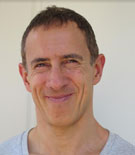 Philip Mendes is associate professor at Monash University in Melbourne, Australia, and the author or co-author of seven books, including Jews and Australian Politics (Sussex Academic Press, 2004). He is currently preparing Jews and the Left: The Rise and Fall of a Political Alliance for publication by Palgrave MacMillan in late 2013. Philip Mendes is associate professor at Monash University in Melbourne, Australia, and the author or co-author of seven books, including Jews and Australian Politics (Sussex Academic Press, 2004). He is currently preparing Jews and the Left: The Rise and Fall of a Political Alliance for publication by Palgrave MacMillan in late 2013. |
|
|
|
Post by pjotr on Dec 12, 2017 21:26:53 GMT 1
|
|
|
|
Post by pjotr on Dec 12, 2017 21:27:37 GMT 1
|
|
|
|
Post by pjotr on Dec 12, 2017 22:41:01 GMT 1
|
|
|
|
Post by pjotr on Dec 13, 2017 17:05:40 GMT 1
A part of the ideology of the Bund was Jewish Autonomism. It shared that philosophy or ideology with it's electoral competitor, the liberal Folkspartei ( yidishe folkspartei, ' Jewish People's Party', folkist party). Jewish Autonomism Simon DubnowJewish Autonomism Simon DubnowJewish Autonomism was a non-Zionist political movement that emerged in Central- and Eastern Europe in the late 19th and early 20th century. One of its major proponents was the historian and activist Simon Dubnow, who also called his ideology folkism. The Autonomists believed that the future survival of the Jews as a nation depends on their spiritual and cultural strength, in developing " spiritual nationhood" and in viability of Jewish diaspora as long as Jewish communities maintain self-rule, and rejected assimilation. Autonomists often stressed the vitality of modern Yiddish culture. Various concepts of Autonomism were adopted in the platforms of the Folkspartei, the Sejmists and socialist Jewish parties such as the Bund. Some groups blended Autonomism with Zionism: they favored Jewish self-rule in the diaspora until diaspora Jews make Aliyah to their national homeland in Zion ( British Palestine back then and Israel today). The movement's beliefs were similar to those of the Austromarxists, who advocated national personal autonomy within the multinational Austro-Hungarian empire, and cultural pluralists in America, such as Randolph Bourne and H orace Kallen. In 1941, Simon Dubnow was one of thousands of Jews murdered in the Rumbula massacre. After the Holocaust, the notion of Autonomism practically disappeared from Jewish philosophy. It is not connected to the contemporary political movement autonomism. |
|
|
|
Post by pjotr on Dec 13, 2017 17:35:26 GMT 1
 Marshall Piłsudski greeted by Polish Orthodox jews Marshall Piłsudski greeted by Polish Orthodox jewsMany Polish jews by the way saw a protector in Józef Klemens Piłsudski at a time in which reactionary catholics, National Democrats (Endecja) and extreme rightwing Polish Falangists targeted jews verbally and sometimes physically. Piłsudski's regime began a period of national stabilization and of improvement in the situation of ethnic minorities, which formed about a third of the Second Republic's population. Piłsudski replaced the National Democrats' " ethnic-assimilation" with a " state-assimilation" policy: citizens were judged not by their ethnicity but by their loyalty to the state. Widely recognized for his opposition to the National Democrats' anti-Semitic policies, he extended his policy of " state-assimilation" to Polish Jews. The years 1926 to 1935 and Piłsudski himself were favorably viewed by many Polish Jews whose situation improved especially under Piłsudski-appointed Prime Minister Kazimierz Bartel. Many Jews saw Piłsudski as their only hope for restraining antisemitic currents in Poland and for maintaining public order; he was seen as a guarantor of stability and a friend of the Jewish people, who voted for him and actively participated in his political bloc. Piłsudski's death in 1935 brought a deterioration in the quality of life of Poland's Jews. Still Polish Jewish socialists and communists of the Bund and the rival of the Bund, the Komunistyczna Partia Polski ( KPP) ended up in prisons and prisoner camps, just like other opponents of the Sanacja regime (Conservatives, Nationalists and Polish fascists) for opposing the Sanation regime. That however didn't make Piłsudski less popular amongst Polish jews, because not every Polish jew was a Bundist or Communist. Many Polish jews were Polish democrats, conservatives or even supporters of the Sanacja party, the Nonpartisan Bloc for Cooperation with the Government (Polish: Bezpartyjny Blok Współpracy z Rządem, pronounced [bɛsparˈtɨjnɨ ˈblɔk fspuwˈpratsɨ z ˈʐondɛm]; abbreviated BBWR). |
|
|
|
Post by pjotr on Dec 13, 2017 18:14:12 GMT 1
Other jewish political parties in pre-war Poland (1918-1939) were: Yidishe folkspartei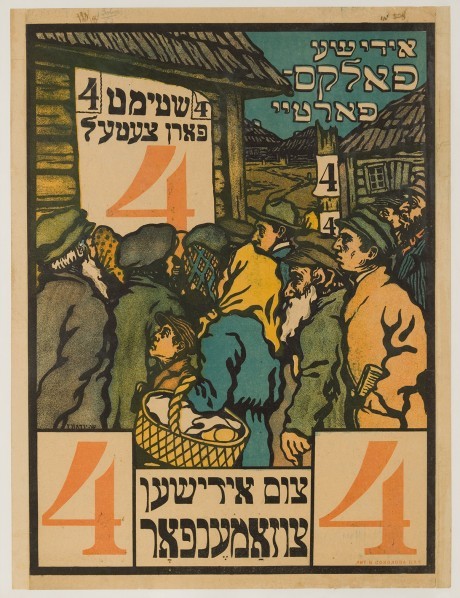 The Folkspartei (Yiddish: ייִדישע פֿאָלקספּאַרטײַ, yidishe folkspartei, 'Jewish People's Party, folkist party) was founded after the 1905 pogroms in the Russian Empire by Simon Dubnow and Israel Efrojkin. The party took part in several elections in Poland and Lithuania in the 1920s and 1930s and did not survive the Shoah. Folkspartei in PolandA local organization and a newspaper, Warszawer Togblat ( The Warsaw Daily), was set up in Warsaw in 1916 in order to contend for the municipal elections (under German occupation), where they gained 4 seats, including Noach Pryłucki, one of the founders of the party's newspaper, later renamed as 'Der Moment'. He was also elected at the 1919 Constituent Sejm, but had to resign for a citizenship matter.  Noach (Nojach) Pryłucki or Noach Prilutski (October 1, 1882 in Berdichev – August 12, 1941 in Vilnius) was a Jewish Polish politician from the Folkspartei. He was also a Yiddish linguist, philologist, lawyer and scholar of considerable renown. Pryłucki was a respected attorney and was said to have had "leadership over the scattered (non-Zionist) national clubs, societies, and groups". Noach (Nojach) Pryłucki or Noach Prilutski (October 1, 1882 in Berdichev – August 12, 1941 in Vilnius) was a Jewish Polish politician from the Folkspartei. He was also a Yiddish linguist, philologist, lawyer and scholar of considerable renown. Pryłucki was a respected attorney and was said to have had "leadership over the scattered (non-Zionist) national clubs, societies, and groups".The party split in 1927 between the Warsaw branch, led by Pryłucki, and the Vilnius ( then a part of Poland) branch, led by Dr. Zemach Shabad, less hostile to Zionism than the Warsaw branch but more Yiddish-centered. After the split the party seems to have declined, with an attempt to revitalize it in Warsaw in 1935. At the 1936 Jewish community elections in Warsaw, the Folkspartei only got 1 seat out of 50, while the Bund got 15. In the 1922- 27 Polish Parliament ( Sejm) Noach Pryłucki was the only Folkist MP out of 35 Jewish MPs ( 25 Zionists, but no Bundist). He was elected on the list of the Bloc of National Minorities.  Zemach Shabad (Hebrew: צמח שאבאד, Polish: 'Cemach Szabad', Russian: Цемах Шабад, Tsemakh Shabad) (February 5, 1864, Vilnius, Russian Empire (now Lithuania) — January 20, 1935, Vilnius) was a Jewish doctor and social and political activist.[1] He was a member of the Senate (parliament) of the Second Polish Republic (1928) and a co-founder and vice-president of the YIVO (Institute for Jewish Research). Zemach Shabad (Hebrew: צמח שאבאד, Polish: 'Cemach Szabad', Russian: Цемах Шабад, Tsemakh Shabad) (February 5, 1864, Vilnius, Russian Empire (now Lithuania) — January 20, 1935, Vilnius) was a Jewish doctor and social and political activist.[1] He was a member of the Senate (parliament) of the Second Polish Republic (1928) and a co-founder and vice-president of the YIVO (Institute for Jewish Research).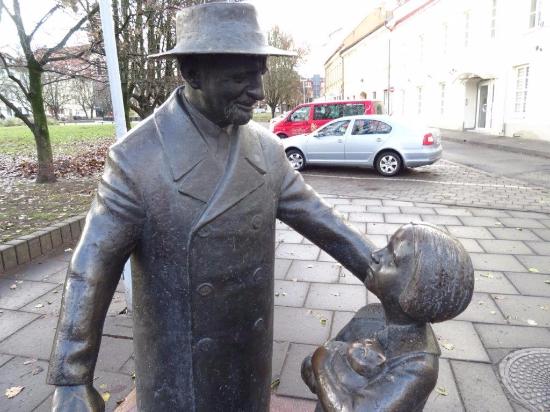    He was one of the originators of the volkist movement, which eventually turned into the Folkspartei (Jewish People's Party). In 2007, Zemach Shabad was honored with a monument in Vilnius, reflecting the fact that he was the prototype of Doctor Aybolit, a good doctor from a poem for children by Korney Chukovsky. en.wikipedia.org/wiki/FolksparteiPoale Zion Members of the Wolbrom Left-wing Poale Zion group march in WarsawPoale Zion Members of the Wolbrom Left-wing Poale Zion group march in WarsawPoale Zion (also spelled Poalei Tziyon or Poaley Syjon, meaning " Workers of Zion") was a movement of Marxist–Zionist Jewish workers founded in various cities of Poland, Europe and the Russian Empire in about the turn of the 20th century after the Bund rejected Zionism in 1901. 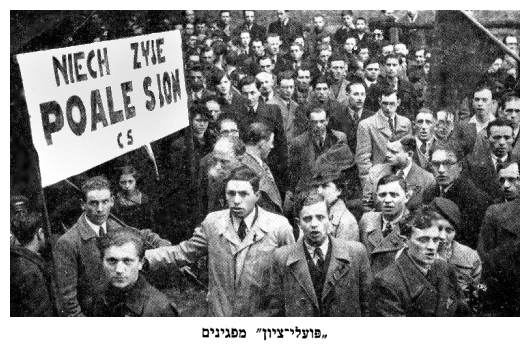 “Poale Zion” protestingPoale Zion “Poale Zion” protestingPoale Zion was torn between Left and Right factions in 1919- 1920, which formally split at the Poale Zion fifth world congress in Vienna in 1920, following a similar division that occurred in the Second International.  Gathering of Poale Zion youth organisation in Ożarów, Poland 1926 Gathering of Poale Zion youth organisation in Ożarów, Poland 1926In Poland, for a brief period following the war, both factions of Poale Zion were reported as legal and functioning political parties. The Polish Left party was the largest Left Poale Zion party in the world. It worked closely with the Bund in developing Yiddish schools in Poland and supporting secular Yiddish culture, although they had political differences (e.g. the Bund was more supportive of the Polish Socialist Party than LPZ). [20] As part of the large-scale ban on Jewish political parties in post-war Poland by t he Communist leadership, both Poale Zion groups were disbanded in February 1950. pl.wikipedia.org/wiki/Poalej_Syjonen.wikipedia.org/wiki/Poale_ZionAgudath Israel Agudath Israel was an Orthodox Jewish political party in Poland which was loyal to the Polish government and opposed secularism, zionism, the Bund, the Folkspartei, Jewish communists and other secular jewish tendencies, movements and political parties. It began as a political party representing ultra-Orthodox Jews in Poland, originating in the Agudath Israel movement in Upper Silesia. World Agudath Israel was established by Jewish religious leaders at a conference held at Kattowitz (Katowice) in 1912. They were concerned that the Tenth World Zionist Congress had defeated a motion by the Torah Nationalists Mizrachi movement for funding religious schools. The aim of World Agudath Israel was to strengthen Orthodox institutions independent of the Zionist movement and Mizrachi organization. The advent of the First World War delayed development of the organisation, however. During the First World War, Rabbi Dr. Pinchas Kohn and Rabbi Dr. Emmanuel Carlebach (both from Germany), were appointed as the rabbinical advisors to the German occupying forces in Poland. In this position, they worked closely with the Grand Rabbi of Ger, Rabbi Avraham Mordechai Alter. As a result of this collaboration, they formed Agudath Israel, whose aim was to unify Eastern European and Western European Orthodox Judaism. Agudath Israel gained a significant following, particularly among Hasidic Jews. It had representatives running in the Polish elections after the First World War, and they won seats in that country's parliament ( Sejm). Among the elected representatives were Alexander Zusia Friedman, Rabbi Meir Shapiro, Rabbi Yosef Nechemya Kornitzer of Kraków, and Rabbi Aharon Lewin of Reysha.  Alexander Zusia Friedman Alexander Zusia Friedman Rabbi Meir Shapiro Rabbi Meir Shapiro Rabbi Yosef Nechemya Kornitzer of Kraków Rabbi Yosef Nechemya Kornitzer of KrakówProminent Torah scholars who led Agudath Yisroel included the Gerrer Rebbe, the Radziner Rebbe, Rabbi Mordechai Yosef Elazar Leiner, and the Chafetz Chaim.  Mordechai Yosef Elazar Leiner, Grand Rabbi of Radzin Mordechai Yosef Elazar Leiner, Grand Rabbi of RadzinThe ideology of the Agudath Yisroel was and is Torah, Torah Judaism, Haredi Judaism, Ashkenazi Haredim interests, Orthodox Halacha and Religious conservatism. Part of that ideology was being loyal to the Polish authorities, rejection of the policies of the Yiddish secular parties Folkspartei, Bund and Poale Zion and probably cooperation with the Sanacja regime and the Polish government before that (1919-1926) and after Sanacja. en.wikipedia.org/wiki/World_Agudath_IsraelOther Jewish movements inside Poland: en.wikipedia.org/wiki/Betaren.wikipedia.org/wiki/Revisionist_Zionismen.wikipedia.org/wiki/General_Zionistsen.wikipedia.org/wiki/Labor_Zionism |
|
|
|
Post by pjotr on Dec 13, 2017 20:34:42 GMT 1
The idea of National personal autonomy The Austromarxist principle of national personal autonomy The Austromarxist principle of national personal autonomy (" personal principle"), developed by Otto Bauer in his 1907 book Die Nationalitätenfrage und die Sozialdemokratie ( The Nationalities Question and Social Democracy) was seen by him a way of gathering the geographically divided members of the same nation to " organize nations not in territorial bodies but in simple association of persons", thus radically disjoining the nation from the territory and making of the nation a non-territorial association. The other ideological founders of the concept were another Austromarxist, Karl Renner, in his 1899 essay Staat und Nation ( State and Nation), and the Jewish Labour Bundist Vladimir Medem, in his 1904 essay Di sotsial-demokratie un di natsionale frage ( Social Democracy and the National Question). Vladimir Medem - ideologue of the Jewish Labour BundIn his 1904 text, Medem exposed his version of the concept: " Let us consider the case of a country composed of several national groups, e.g. Poles, Lithuanians and Jews. Each national group would create a separate movement. All citizens belonging to a given national group would join a special organisation that would hold cultural assemblies in each region and a general cultural assembly for the whole country. The assemblies would be given financial powers of their own: either each national group would be entitled to raise taxes on its members, or the state would allocate a proportion of its overall budget to each of them. Every citizen of the state would belong to one of the national groups, but the question of which national movement to join would be a matter of personal choice and no authority would have any control over his decision. The national movements would be subject to the general legislation of the state, but in their own areas of responsibility they would be autonomous and none of them would have the right to interfere in the affairs of the others". SupportersThis principle was later adopted by various parties, among them the Jewish Socialist Workers Party from its foundation in 1906, the Jewish Labour Bund at its August 1912 Conference (when the motion " On National Cultural Autonomy" became part of the Bund's program), the Armenian social democrats, the Russian Constitutional Democratic Party (Kadets) at its June 1917's Ninth Congress,[6] the Thessaloniki Ottoman, then the Greek Socialist Workers' Federation, the left-wing Zionists (Hashomer Hatzair) in favour of a binational solution in Palestine, the Jewish Folkspartei (inspired by Simon Dubnov who had developed a concept of Jewish autonomy close to Bauer's), and the Democratic Union of Hungarians in Romania (DAHR) after 1989. OpponentsThe whole concept was strongly opposed by the Bolsheviks. Stalin's pamphlet Marxism and the National Question (1913) was their ideological reference on the matter, along with Lenin's Critical Remarks on the National Question (December 1913), in particular in the chapter "Cultural-National Autonomy". (Stalin was later People's Commissar of Nationalities from 1917 - 1923.) Lenin's and Stalin's critics of the national personal autonomy concept were later joined by the Catalan Andreu Nin in his article The Austrian School, National Emancipation Movements (1935). Implementation It was adopted as an official policy in the short-lived Ukrainian People's Republic (1917–1920) and in the interwar Estonian Republic (1925 Law on Personal Autonomy), and it was included in the Declaration Concerning the Protection of Minorities in Lithuania by the League of Nations in 1925. The autonomous representative structure of the Palestinian Jews between 1920 and 1949, the Asefat ha-Nivharim, can also be considered as an implementation of the national personal autonomy principle. Since the fall of the Soviet Union and its satellites regimes, the national personal autonomy is the principle on which legislation applying to ethnic minorities has been enacted such as Estonia's (1993 National Minorities Cultural Autonomy Act), Hungary's Act LXXVII of 1993 on the Rights of National and Ethnic Minorities, Latvia's 1991 Law on Unrestricted Development and Right to Cultural Autonomy of Latvia's Nationalities and Ethnic Groups, Lithuania's 1989 Law on Ethnic Minorities, Russia's 1996 Law on National-Cultural Autonomies, and Ukraine's 1992 Law on National Minorities.
|
|
|
|
Post by pjotr on Dec 13, 2017 23:24:15 GMT 1
For the Bund Yiddishkeit ("Jewishness") was an important element in their brand of Socialism, Jewish Socialism in Poland with autonomist elements. The Bund was important for the development, maintainance and continuation of the Yiddish language and culture.
Yiddishkeit (Yiddish: ייִדישקייט — yidishkeyt using the YIVO transliteration rules, yidishkayt in quasi-phonetic transcription) literally means "Jewishness", i. e. "a Jewish way of life", in the Yiddish language. It can refer to Judaism or forms of Orthodox Judaism when used by religious or Orthodox Jews. In a more general sense it has come to mean the "Jewishness" or "Jewish essence" of Ashkenazi Jews in general and the traditional Yiddish-speaking Jews of Eastern and Central Europe in particular.
From a more secular perspective it is associated with the popular culture or folk practices of Yiddish-speaking Jews, such as popular religious traditions, Central and Eastern European Jewish cuisine, Yiddish humour, shtetl life, and klezmer music, among other things.
Shtetlekh (Yiddish: שטעטל, shtetl (singular), שטעטלעך, shtetlekh (plural)) were small towns with large Jewish populations, which existed in Central and Eastern Europe before the Holocaust.
Before the Haskalah and the Jewish emancipation in Europe, central to Yiddishkeit were Torah study and Talmudical studies for men, and a family and communal life governed by the observance of Jewish Law for men and women. Among Haredi Jews of Eastern European descent, who compose the majority of Jews who still speak Yiddish in their everyday lives, the word has retained this meaning.
But with secularization, Yiddishkeit has come to encompass not just traditional Jewish religious practice, but a broad range of movements, ideologies, practices, and traditions in which Ashkenazi Jews have participated and retained their sense of "Jewishness". Yiddishkeit has been identified in manners of speech, in styles of humor, in patterns of association, in culture and education. Another quality often associated with Yiddishkeit is an emotional attachment and identification with the Jewish people. In these latter exceptions of the term, the most common Latinate spelling is yiddishkayt.
The Bund promoted the use of Yiddish in Poland as a Jewish national language and to some extent opposed the Zionist project of reviving Hebrew.
|
|
|
|
Post by pjotr on Dec 14, 2017 0:26:20 GMT 1
Kabbalnik
Published on 13 may 2010
The hebrew word "Li La Lo" (for me, for her, for him) express a great amount of tolerance, and at the same time imply a careful touch of exclusiveness: Here, there is something for one and all, but still, the peculier "Chochme", that typical Yiddish wit of the songs does not seek superficial acclaim.
Jossy En Jacques Halland are "Li La Lo". In their own house in Amsterdam, they ran the last independent West-European Yiddish Cabaret. They ardently resist the decline of "Mameloschen", which has always been misunderstood, and thus frowned upon, as a slang or even bad German.
Jaques Halland, pianist, composer, and poet in one has no philogical arpirations. To him, his language is merely the appropriate means to a subtile end. It is his medium in conveying the philoshophical complexity of the sometimes acid Yiddish witicisms in combination with his catchy music in artistic perfection.
Jossy Halland has no small part in this: born in Poland as daughter to an opera-singer, she is a first-rate mime. Her faculties were developed during her engagement with the Ararat Theatre in Warsaw, and unnumbered appearances on various stages, Brussels and Paris among them.
The biography of Jaques Halland portrays the fate of a European Jew of his century. His experiences taught him to think in relatives. Born in Paris as a son of a Dutch painter and grandson of a poet Rabbi he was repeatedly forced by political persecution to interrupt his studies at the conservatoire. In Paris too, he came to meet personalities like Fernandel, Yves Montand and Django Reinhard, accompanying them on a jazz piano.
After over 20 successful years, Jossy and Jacques Halland reluctantly decided to give up their unforgotten little Cabaret in Amsterdam, in favor of more extensive touring activities.
Li La Lo closed its doors in 1982.
Trikont 1980
|
|
|
|
Post by pjotr on Dec 14, 2017 1:05:10 GMT 1
Jewish left The term Jewish left describes Jews who identify with or support left wing, occasionally liberal causes, consciously as Jews, either as individuals or through organizations. There is no one organization or movement which constitutes the Jewish left, however. Jews have been major forces in the history of the labor movement, the settlement house movement, the women's rights movement, anti-racist work, and anti-fascist organizing of many forms in Europe, the United States and modern-day Israel. The Jewish people have a rich history of involvement in socialism, Marxism, and Western liberalism. Although the expression " on the left" covers a range of politics, many well-known figures " on the left" have been of Jews who were born into Jewish families and have various degrees of connection to Jewish communities, Jewish culture, Jewish tradition or the Jewish religion in its many variants. Jewish leftism arguably has its philosophic roots in the Jewish Enlightenment, or Haskalah, led by thinkers such as Moses Mendelssohn, as well as the support of many European Jews such as Ludwig Börne for republican ideals in the aftermath of the French Revolution and the Napoleonic Wars. In the eighteenth and nineteenth centuries, a movement for Jewish Emancipation spread across Europe, strongly associated with the emergence of political liberalism, based on the Enlightenment principles of rights and equality under the law. Because liberals represented the political left of the time (see left-right politics), emancipated Jews, as they entered the political culture of the nations where they lived, became closely associated with liberal parties. Thus, many Jews supported the American Revolution of 1776, the French Revolution of 1789, and the European Revolutions of 1848; while Jews in England tended to vote for the Liberal Party, which had led the parliamentary struggle for Jewish Emancipation — an arrangement called by some scholars “the liberal Jewish compromise”. Jewish leftism arguably has its philosophic roots in the Jewish Enlightenment, or Haskalah, led by thinkers such as Moses Mendelssohn, as well as the support of many European Jews such as Ludwig Börne for republican ideals in the aftermath of the French Revolution and the Napoleonic Wars. In the eighteenth and nineteenth centuries, a movement for Jewish Emancipation spread across Europe, strongly associated with the emergence of political liberalism, based on the Enlightenment principles of rights and equality under the law. Because liberals represented the political left of the time (see left-right politics), emancipated Jews, as they entered the political culture of the nations where they lived, became closely associated with liberal parties. Thus, many Jews supported the American Revolution of 1776, the French Revolution of 1789, and the European Revolutions of 1848; while Jews in England tended to vote for the Liberal Party, which had led the parliamentary struggle for Jewish Emancipation — an arrangement called by some scholars “the liberal Jewish compromise”. In the age of industrialisation in the late nineteenth century, a Jewish working class emerged in the cities of Eastern and Central Europe. Before long, a Jewish labour movement emerged too. The Jewish Labour Bund–General Jewish Labor Union was formed in Lithuania, Poland, and Russia in 1897. Distinctive Jewish socialist organizations formed and spread across the Jewish Pale of Settlement in the Russian Empire. There were also a significant number of people of Jewish origin who did not explicitly identify as Jews per se but were active in anarchist, socialist and social democratic as well as communist organizations, movements and parties. As Zionism grew in strength as a political movement, socialist Zionist parties were formed, such as Ber Borochov's Poale Zion. There were non-Zionist left-wing forms of Jewish nationalism, such as territorialism (which called for a Jewish national homeland, but not necessarily in Palestine), autonomism (which called for non-territorial national rights for Jews in multinational empires) and the folkism, advocated by Simon Dubnow, (which celebrated the Jewish culture of the Yiddish-speaking masses). As Eastern European Jews migrated West from the 1880s, these ideologies took root in growing Jewish communities, such as London’s East End, Paris's Pletzl, New York City’s Lower East Side and Buenos Aires. There was a lively Jewish anarchist scene in London, a central figure of which was, the non-Jewish German thinker and writer Rudolf Rocker. The important Jewish socialist movement in the United States, with its Yiddish-language daily, The Forward, and trade unions such as the International Ladies' Garment Workers' Union and the Amalgamated Clothing Workers. Important figures in these milieux included Rose Schneiderman, Abraham Cahan, Morris Winchevsky and David Dubinsky. In the late 19th and early 20th centuries, Jews played a major role in the Social Democratic parties of Germany, Russia, Austria-Hungary and Poland. Historian Enzo Traverso has used the term " Judeo-Marxism" to describe the innovative forms of Marxism associated with these Jewish socialists. These ranged from strongly cosmopolitan positions hostile to all forms of nationalism (as with Rosa Luxemburg and, to a lesser extent, Leon Trotsky) to positions more sympathetic to cultural nationalism (as with the Austromarxists or Vladimir Medem of the Bund). 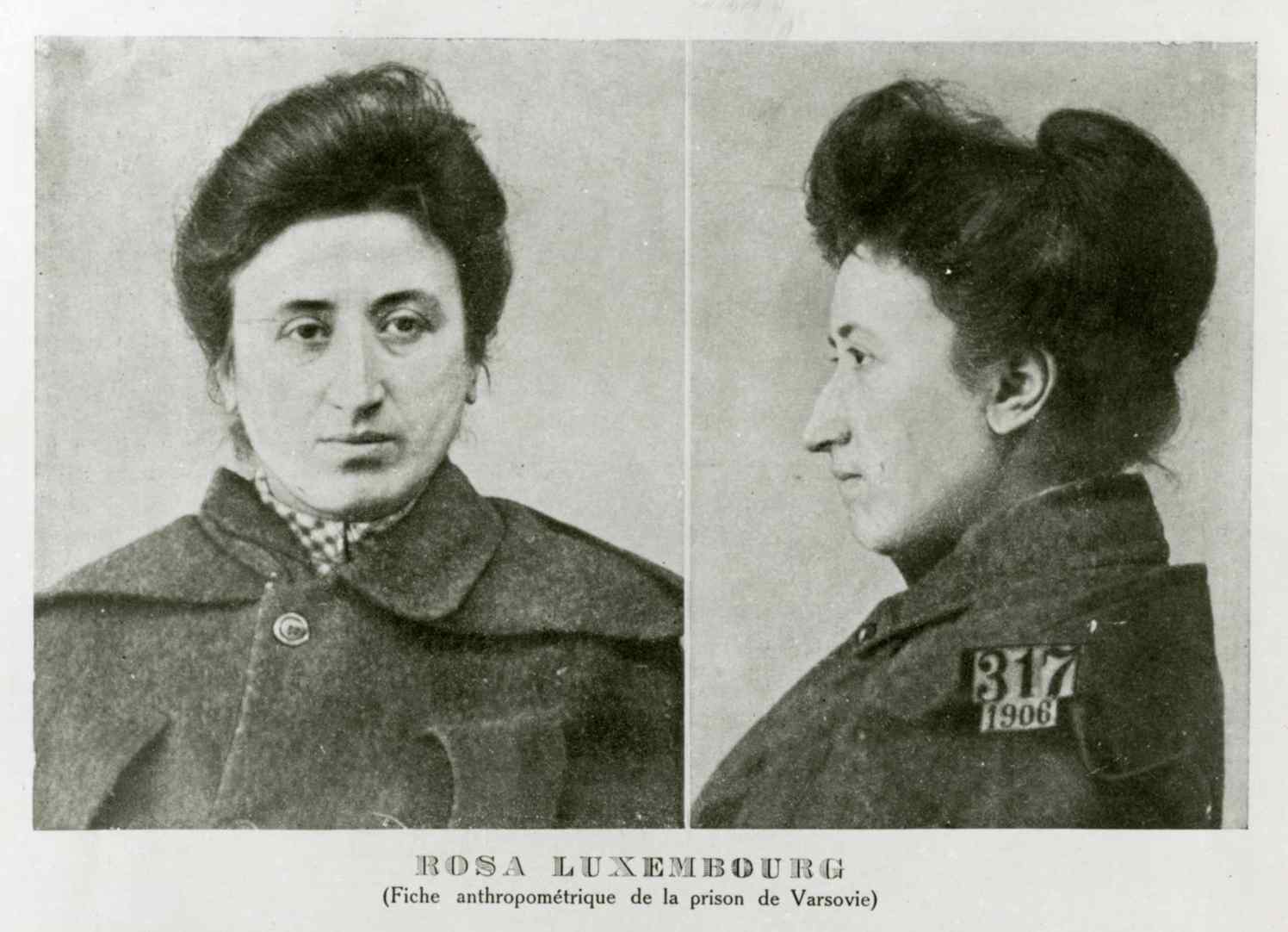 Rosa Luxemburg, a Polish and German leftwing socialist. A prison photo from Warsaw in the back then Czarist Russian empire Rosa Luxemburg, a Polish and German leftwing socialist. A prison photo from Warsaw in the back then Czarist Russian empireAs with the American revolution of 1776, the French revolution of 1789 and the German revolution of 1848, many Jews worldwide welcomed the Russian revolution of 1917, celebrating the fall of a regime that had presided over antisemitic pogroms, and believing that the new order in what was to become the Soviet Union would bring improvements in the situation of Jews in those lands. Many Jews became involved in Communist parties, constituting large proportions of their membership in many countries, including Great Britain and the U.S. There were specifically Jewish sections of many Communist parties, such as the Yevsektsiya in the Soviet Union. The Communist regime in the USSR pursued what could be characterised as ambivalent policies towards Jews and Jewish culture, at times supporting their development as a national culture (e.g., sponsoring significant Yiddish language scholarship and creating an autonomous Jewish territory in Birobidzhan), at times pursuing antisemitic purges, such as that in the wake of the so-called Doctors' plot. (See also Komzet.) With the advent of fascism in parts of Europe in the 1920s and 1930s, many Jews responded by becoming actively involved in the left, and particularly the Communist parties, which were at the forefront of the anti-fascist movement. For example, many Jewish volunteers fought in the International Brigades in the Spanish Civil War (for instance in the American Abraham Lincoln Brigade and in the Polish-Jewish Naftali Botwin Company). Jews and leftists fought Oswald Mosley's British fascists at the Battle of Cable Street. This mass movement was influenced by the Jewish Anti-Fascist Committee in the Soviet Union. In World War II, the Jewish left played a major part in resistance to Nazism. For example, Bundists and left Zionists were key in Żydowska Organizacja Bojowa and the Warsaw Ghetto Uprising.  Members of the Jewish resistance captured during the Warsaw ghetto uprising in 1943 Members of the Jewish resistance captured during the Warsaw ghetto uprising in 1943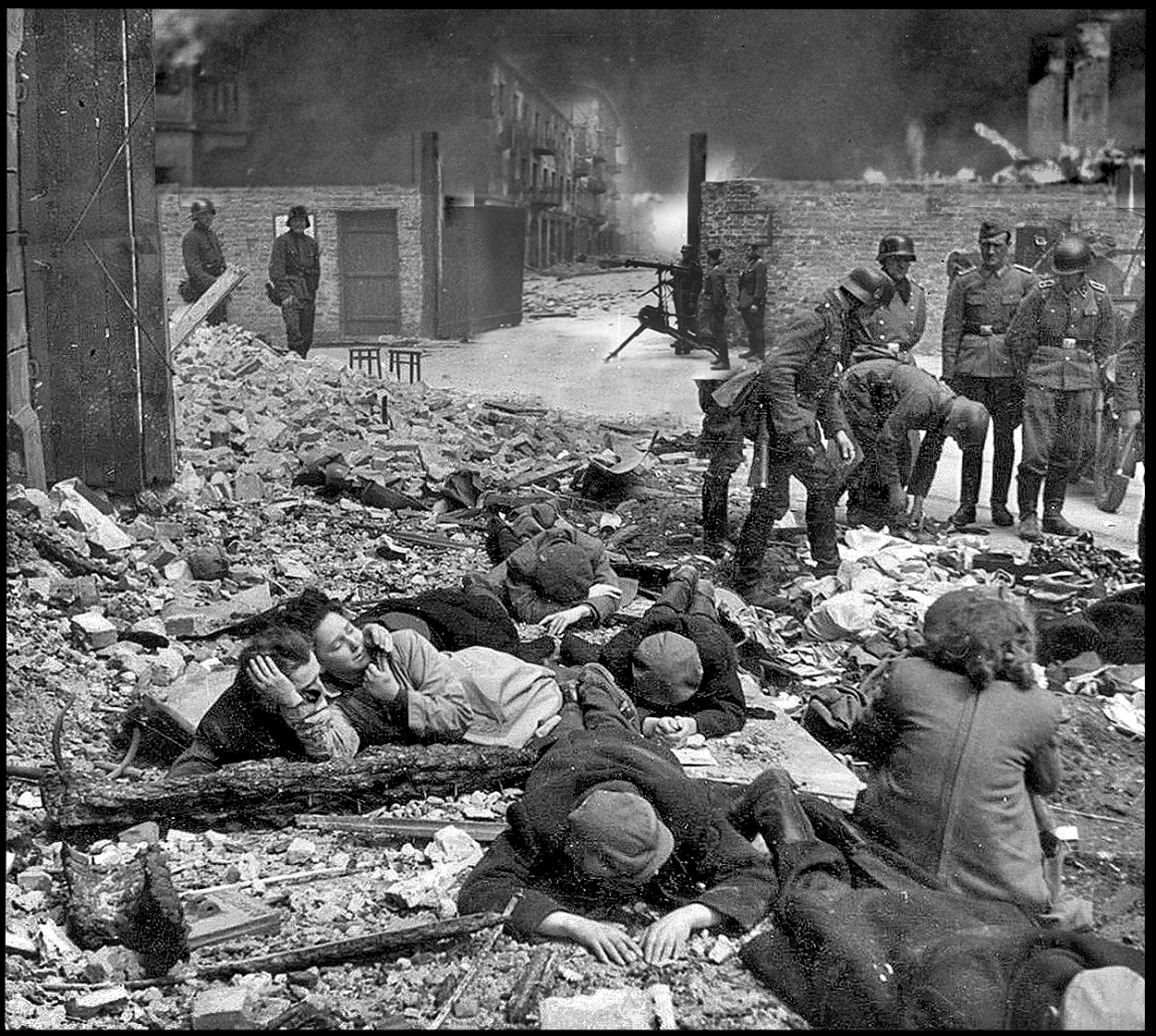 As well as the movements rooted in the Jewish working class, relatively assimilated middle class Jews in Central and Western Europe began to search for sources of radicalism in Jewish tradition. For example, Martin Buber drew on Hassidism in articulating his anarchist philosophy, Gershom Scholem was an anarchist and a kabbalah scholar, Walter Benjamin was equally influenced by Marxism and Jewish messianism, Gustav Landauer was a religious Jew and a libertarian communist, Jacob Israël de Haan combined socialism with Haredi Judaism, while left-libertarian Bernard Lazare became a passionately Jewish Zionist in 1897 but wrote 2 years later to Herzl – and by extension to the Zionist Action Committee, " You are bourgeois in thoughts, bourgeois in your feelings, bourgeois in your ideas, bourgeois in your conception of society.". In Weimar Germany, Walther Rathenau was a leading figure of the Jewish left.  Walther Rathenau (29 September 1867 – 24 June 1922) was a German statesman who served as Foreign Minister during the Weimar Republic. Walther Rathenau (29 September 1867 – 24 June 1922) was a German statesman who served as Foreign Minister during the Weimar Republic.
|
|
|
|
Post by pjotr on Dec 14, 2017 18:55:05 GMT 1
Dear friends, Due to centuries of christian anti-semitism of Roman-Catholic, Russian-Orthodox and Anglican (British) rulers jews in Europe had financial-economical, social-cultural and political problems to maintain themselves, to survive and to be equal and prosporous like other people. In the Middle ages some professions were prohibited for them and even after the middle ages they only were allowed to live in certain Ghetto's, Shtetlekh (small towns with large Jewish populations) or only in certain cities. Jews depended on tolerant Polish kings, Polish magnats and sometimes Szlachta. In Spain the jews suffered under Inquisition, in England they were evicted, in France and Germany they suffered from Pogroms, and therefor they fled Western-Europe for Poland where they find refuge. For many centuries jews lived in Poland during the Polish–Lithuanian Commonwealth and during the parititions (When Poland was part of the Prussian Empire, the Austrian Habsburg empire and the Russian Czarist empire). In the Czarist empire the Jews suffered under Russian, Ukrainian and Cossack popgroms. For instance the Khmelnytsky Uprising led by Ukrainian Hetman Bohdan Khmelnytsky lead to the deaths of an estimated 18,000-100,000 Jews. He used Jews as scapegoats and sought to eradicate Jews from Ukraine. Before the Khmelnytsky uprising, Polish magnates had sold and leased certain privileges to arendators, many of whom were Jewish, who earned money from the collections they made for the magnates by receiving a percentage of an estate's revenue. By not supervising their estates directly, the magnates left it to the leaseholders and collectors to become objects of hatred to the oppressed and long-suffering peasants. Khmelnytsky told the people that the Poles had sold them as slaves "into the hands of the accursed Jews." With this as their battle cry, Cossacks and the peasantry massacred numerous Jewish and Polish-Lithuanian townsfolk, as well as szlachta during the years 1648–1649. The contemporary 17th-century Eyewitness Chronicle (Yeven Mezulah) by Nathan ben Moses Hannover states: Wherever they found the szlachta, royal officials or Jews, they [Cossacks] killed them all, sparing neither women nor children. They pillaged the estates of the Jews and nobles, burned churches and killed their priests, leaving nothing whole. It was a rare individual in those days who had not soaked his hands in blood .. Jews for centuries were seen as aliens in the European countries they lived in, certain professions were prohibited for them, they weren't allowed to live in certain towns or cities, certain neighborhoods or regions. Due to these prohibitions they became good in some arts and crafts, in trade and in banking. I remember that my mother rented a room of the Polish jewish banker Landau during the fifties and sixties in Warsaw. Landau had been a Polish banker with international connections before the war. He traveled to Vienna, Prague, Budapest, Berlin, Paris, Londen, Brussels and Amsterdam and spoke English, French and German next to Polish. Landau had a beautiful jewish wife, and thus both had survived the war. Due to isolation, discrimination, persecution, oppression, Racism (the vicious anti-semitism in Eastern-Europe and some parts of Central-Europe) the jews felt themselves attracted to the enlightenment, the American and French revolutions, and the liberal and socialist movements and revolutions of the 19th century. Nationalism rejected them and the internationalism of socialism and marxism gave them a place between the European peoples. In that respect I can understand the Jewish socialists and communists of the 19th and 20th centuries. Jewish political movementsThe Jews had to build or create their own political parties or otherwise represent their interest in politics outside the Jewish community. From the time of the siege of Jerusalem by the Romans to the foundation of Israel the Jewish people had no territory, and, until the 19th century they by-and-large were also denied equal rights in the countries in which they lived. Thus, until the 19th century effort for the emancipation of the Jews, almost all Jewish political struggles were internal, and dealt primarily with either religious issues or issues of a particular Jewish community. Birth of Jewish political movementsSince Jews were excluded as outsiders throughout Europe, they were mostly shut out of politics or any sort of participation in the wider political and social sphere of the nations in which they were involved until the Enlightenment, and its Jewish counterpart, Haskalah, made popular movements possible. As long as the Jews lived in segregated communities, and as long as all avenues of social intercourse with their gentile neighbors were closed to them, the rabbi was the most influential member of the Jewish community. In addition to being a religious scholar and clergy, a rabbi also acted as a civil judge in all cases in which both parties were Jews. Rabbis sometimes had other important administrative powers, together with the community elders. The rabbinate was the highest aim of many Jewish boys, and the study of the Torah ( first five books of the Bible) and the Talmud was the means of obtaining that coveted position, or one of many other important communal distinctions. Haskalah followers advocated " coming out of the ghetto", not just physically but also mentally and spiritually. The example of Moses Mendelssohn (1729–1786), a Prussian Jew and grandfather of the composer Felix Mendelssohn, served to lead this movement. Mendelssohn's extraordinary success as a popular philosopher and man of letters revealed hitherto unsuspected possibilities of integration and acceptance of Jews among non-Jews. 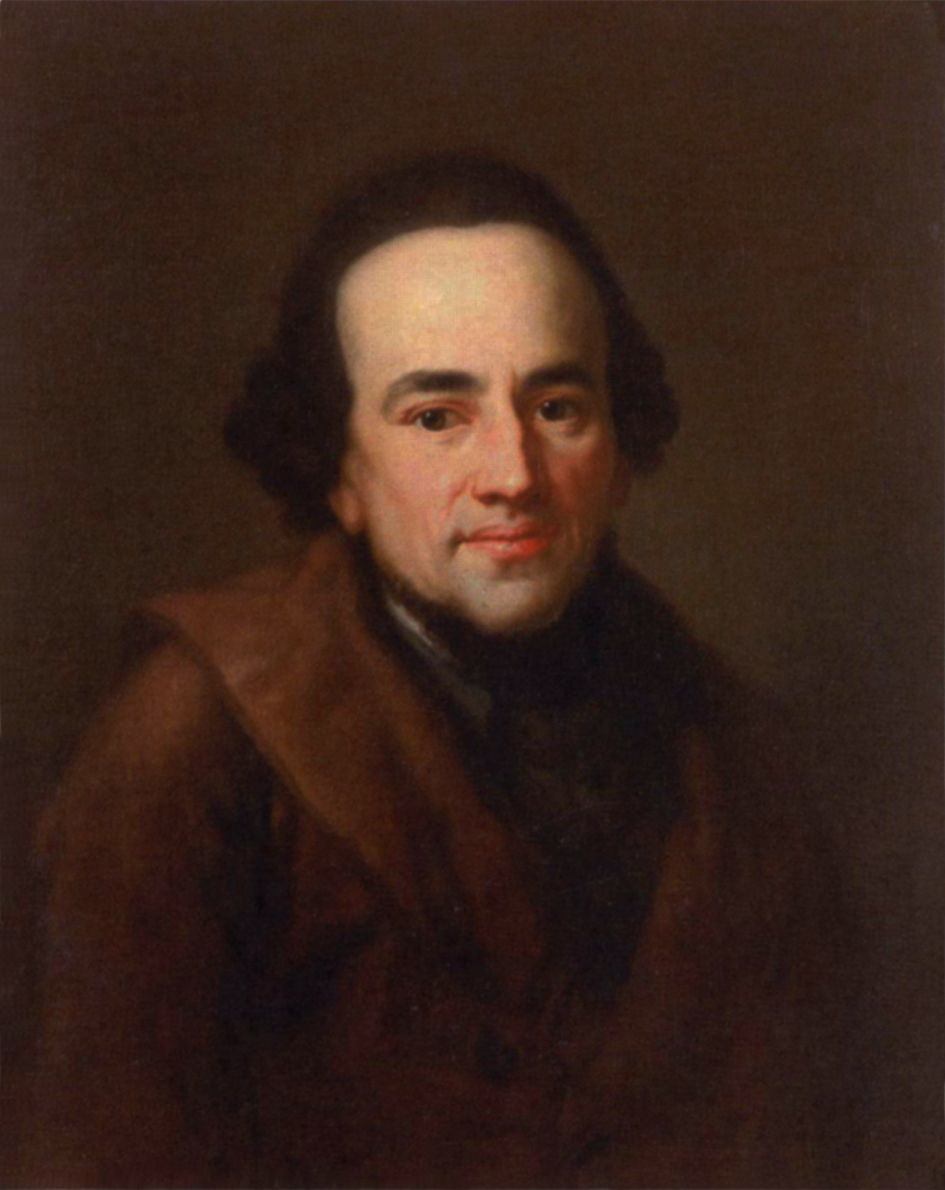 Moses Mendelssohn Moses MendelssohnThe changes caused by the Haskalah movement coincided with rising revolutionary movements throughout Europe. Despite these movements, only France, Britain, and the Netherlands had granted the Jews in their countries equal rights with gentiles after the French Revolution in 1796. Elsewhere in Europe, especially where Jews were most concentrated in Central and Eastern Europe, Jews were not granted equal rights. It was in the revolutionary atmosphere of the mid-19th century that the first true Jewish political movements would take place. Emancipation movementsDuring the early stages of Jewish emancipation movements, Jews were simply part of the general effort to achieve freedom and rights that drove popular uprisings like the Revolutions of 1848. Jewish statesmen and intellectuals like Heinrich Heine, Johann Jacoby, Gabriel Riesser, Berr Isaac Berr, and Lionel Nathan Rothschild were active with the general movement towards liberty and political freedom. 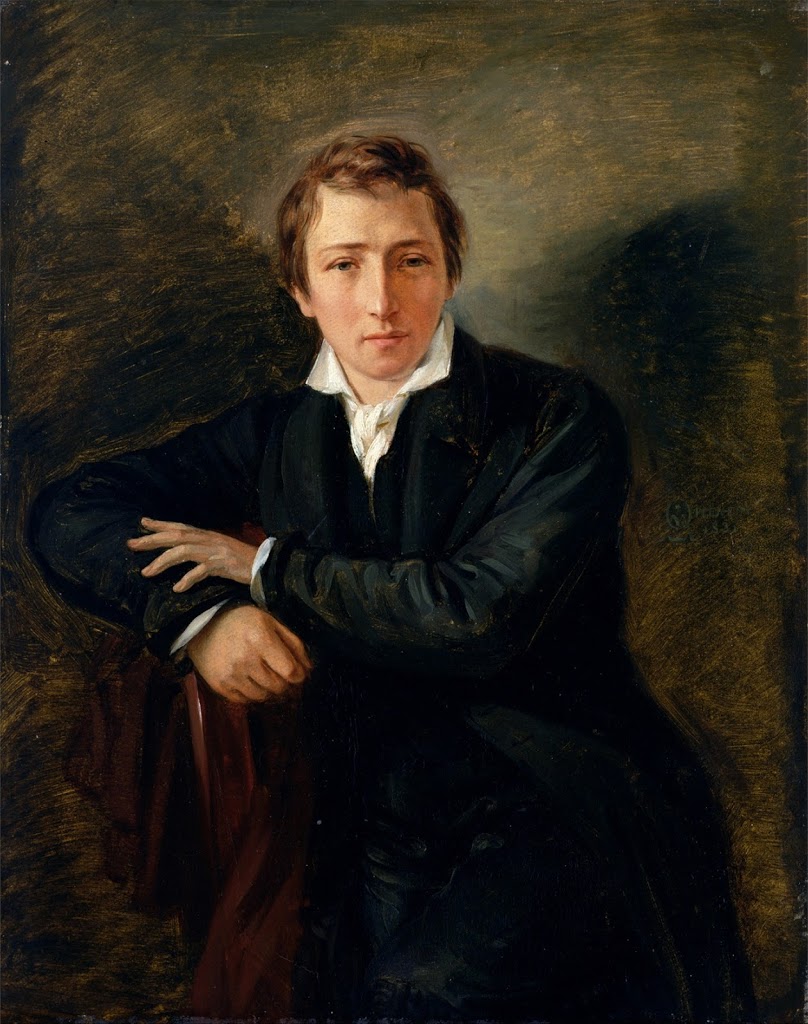 Heinrich Heine Heinrich Heine Nathan Rothschild Nathan RothschildStill, in the face of persistent anti-semitic incidents like the Damascus Blood Libel of 1840, and the failure of many states to emancipate the Jews, Jewish organizations started to form in order to push for the emancipation and protection of Jews. The Board of Deputies of British Jews under Moses Montefiore, the Central Consistory of Paris, and the Alliance Israelite Universelle founded by Adolphe Crémieux, all began working to assure the freedom of the Jews throughout the middle of the 19th century.  Moses MontefioreSocialist and Labor movements Moses MontefioreSocialist and Labor movementsFrustration with the slow pace of Jewish acceptance into European society, and a revolutionary utopianism, led to a growing interest in proto-socialist and communist movements, especially as early socialist leaders, like Saint-Simon, preached the emancipation of the Jews. Moses Hess played a role in introducing Karl Marx (who was descended from a long line of rabbis) and Friedrich Engels to historical materialism. The Jewish Ferdinand Lassalle, founded the first actual workers' party in Germany, the General German Workers' Association (which ultimately merged with other parties to become the Social Democratic Party of Germany) and made Jewish emancipation one of his goals. The German Jewish Social Democrat Eduard Bernstein, (1850 - 1932) was one of the first Socialists to attempt a revision of Karl Marx’s tenets, such as abandoning the ideas of the imminent collapse of the capitalist economy and the seizure of power by the proletariat. Although he was not a distinguished theoretician, Bernstein, called “ the father of revisionism,” (= Democratic Socialism or Social Democracy) envisaged a type of social democracy that combined private initiative with social reform. 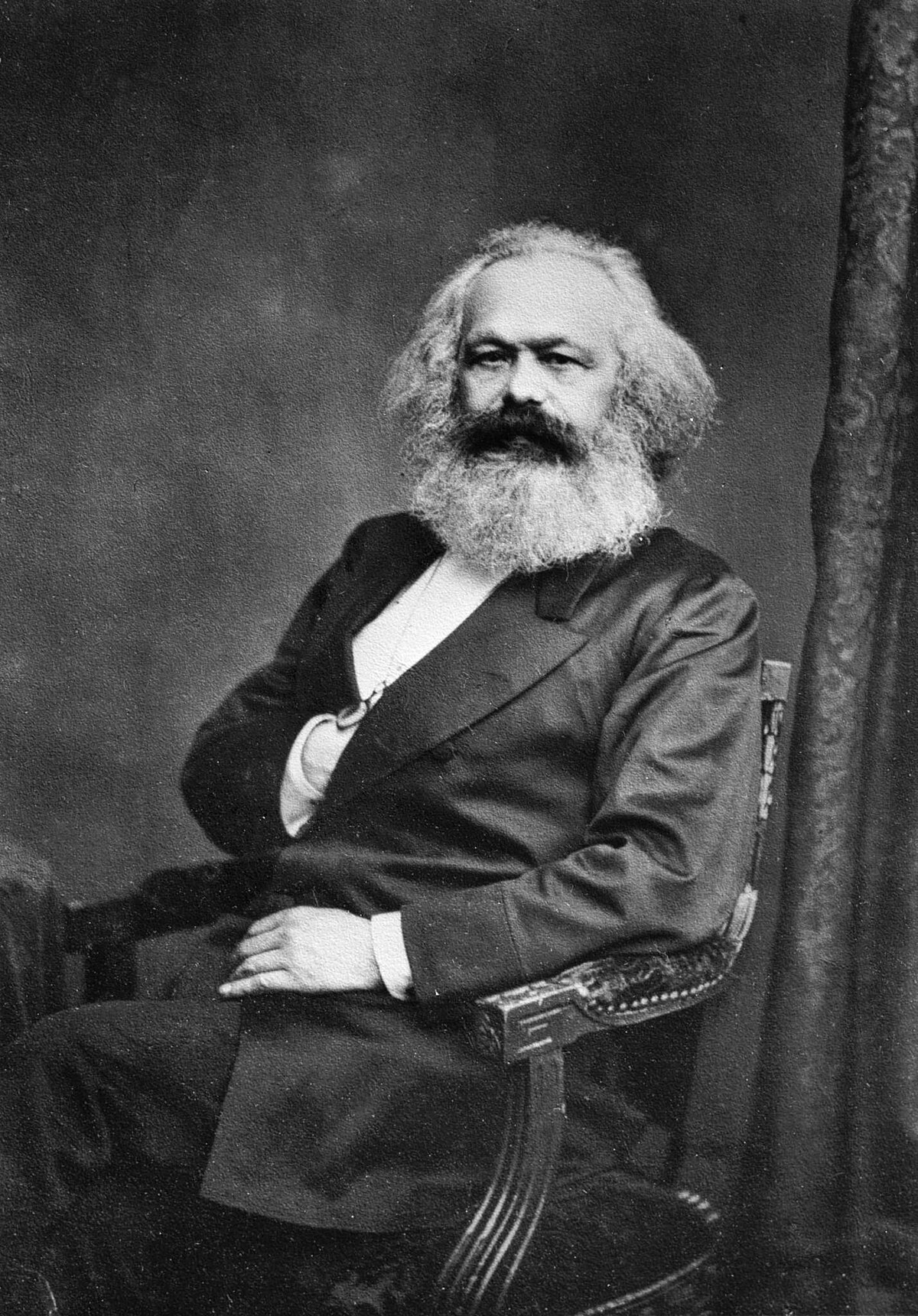 Karl Marx Karl Marx Ferdinand Lassalle Ferdinand Lassalle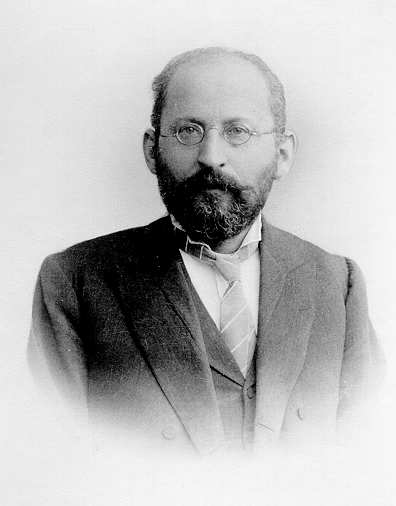 Eduard Bernstein, one of the key ideologues of early Social Democracy Eduard Bernstein, one of the key ideologues of early Social DemocracyIn 1902 Bernstein was elected a member of the Reichstag, or Parliament, to which he was reelected several times. He remained a member of the Reichstag up to 1928. Eventually revisionism became Social Democratic ideology, while the dogmatic Marxism of the socialist theoretician Karl Kautsky and the eclectic Marxism of the German labour leader August Bebel faded into the background. 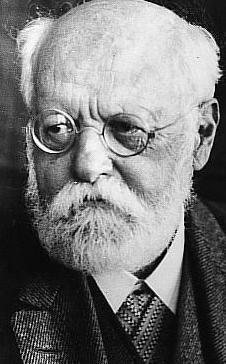 Karl Kautsky Karl Kautsky Ferdinand August Bebel (22 February 1840 – 13 August 1913) (Non-Jewish) was a German socialist politician, writer, and orator. He is best remembered as one of the founders of the Social Democratic Workers' Party of Germany (SDAP) in 1869, which in 1875 merged with the General German Workers' Association into the Socialist Workers' Party of Germany (SAPD). During the repression under the terms of the Anti-Socialist Laws, Bebel became the leading figure of the social democratic movement in Germany and from 1892 until his death served as chairman of the Social Democratic Party of Germany.The more intellectual socialist movements of the Jews in Western Europe Ferdinand August Bebel (22 February 1840 – 13 August 1913) (Non-Jewish) was a German socialist politician, writer, and orator. He is best remembered as one of the founders of the Social Democratic Workers' Party of Germany (SDAP) in 1869, which in 1875 merged with the General German Workers' Association into the Socialist Workers' Party of Germany (SAPD). During the repression under the terms of the Anti-Socialist Laws, Bebel became the leading figure of the social democratic movement in Germany and from 1892 until his death served as chairman of the Social Democratic Party of Germany.The more intellectual socialist movements of the Jews in Western Europe never gathered steam as emancipation took hold. In Eastern Europe and Russia, however, the Bund – the General Jewish Labor Union – founded in 1897, became a key force in organizing Jews, and, at least initially, the major opponent of another Jewish political movement of the time, Zionism. There were other Jewish socialist parties in Russia, like the (territorialist) Zionist Socialist Workers Party and the Jewish Socialist Workers Party, which united their destinies in 1917 as the United Jewish Socialist Workers Party. Another left-wing Russian Jewish party was the Jewish Social Democratic Labour Party (Poalei Zion). FolkistsIn the aftermath of the 1905 pogroms in Russia, the historian Simon Dubnow founded the Folkspartei (Yiddishe Folkspartay) which had some intellectual audience in Russia, then, in independent Poland and Lithuania in the 1920–1930s where it was represented as well in the Parliaments (Sejm, Seimas) as in numerous municipal councils (incl. Warsaw) till in the late 1930s. The party did not survive the Shoah, the Holocaust. 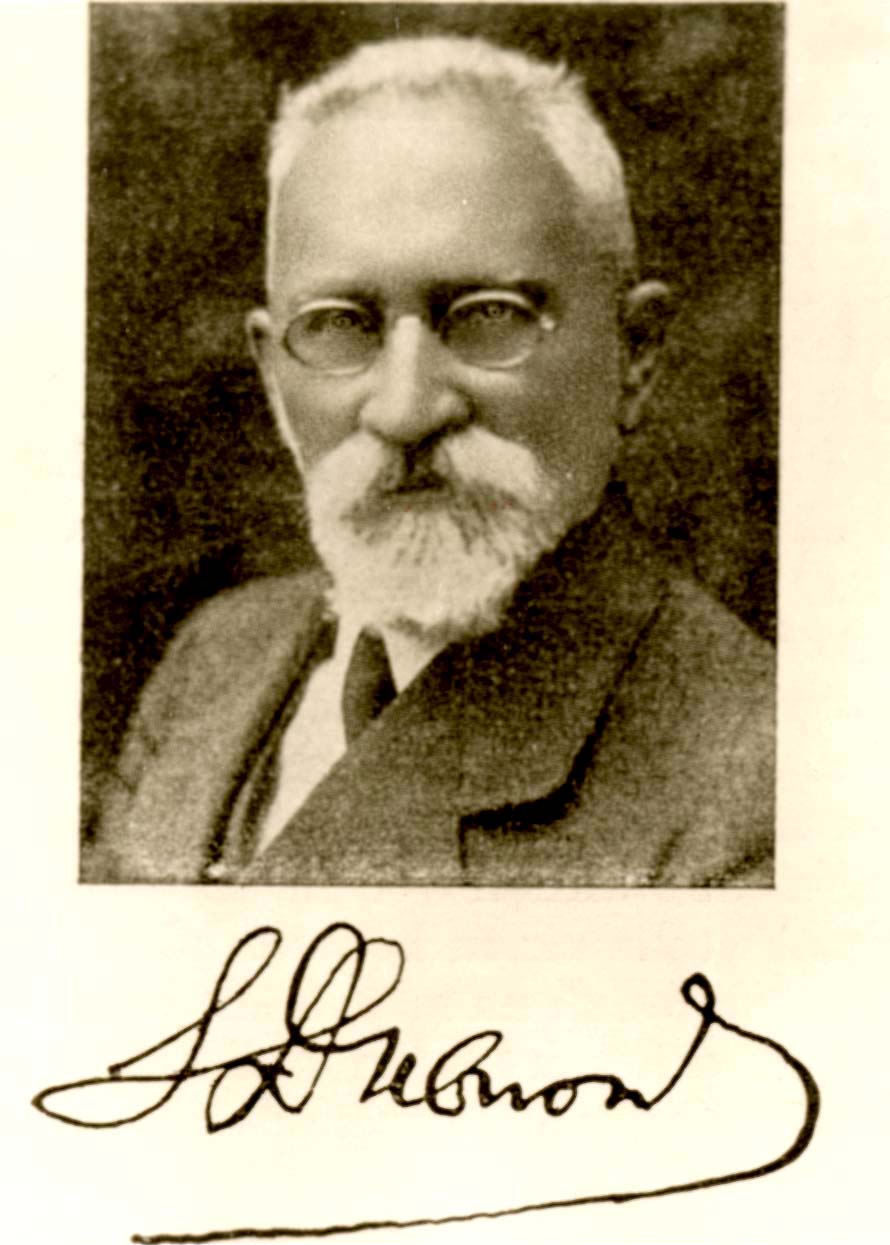 Simon Dubnow, founder of the FolksparteiTerritorialists Simon Dubnow, founder of the FolksparteiTerritorialistsThe territorialists, who had split from the Zionists after the Seventh Zionist Congress in 1905, called for creation of a sufficiently large and compact Jewish territory (or territories), not necessarily in the Land of Israel and not necessarily fully autonomous. Some territorialist leaders, such as Nachman Syrkin, supported the Socialist versions of Zionism, while some others, such as Lucien Wolf, actively opposed Zionism and promoted anti-nationalist ideas. Isaac Nachman Steinberg, one of the founders of the Freeland League, held anti-authoritarian socialist views, as well as his close friend Erich Fromm, who supported Steinberg's territorialist ideas. Anarchists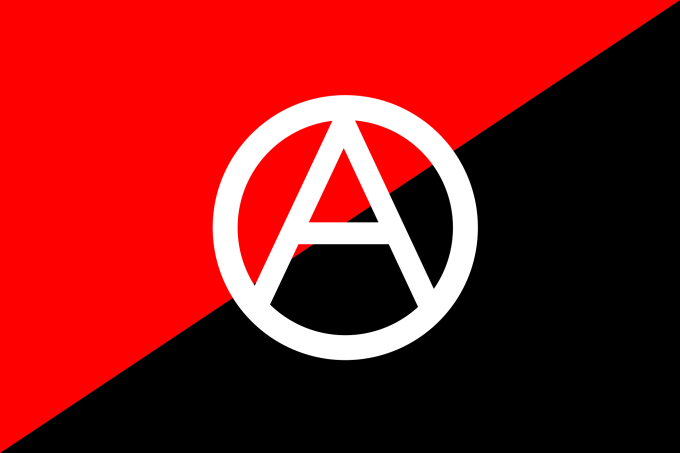 While the Jews in general played an important role in the international anarchist movements, many Jewish anarchists actively promoted Yiddish language and culture, focused on specifically Jewish issues. While most Jewish anarchists were irreligious or even vehemently anti-religious, some Jewish anarchist and anti-authoritarian thinkers, such as Martin Buber, rabbi Yehuda Ashlag, Isaac Nachman Steinberg and Gustav Landauer, were religious or religiously inclined and often referred to the Torah, Talmud and other traditional Judaic sources, claiming that anarchist ideas are deeply rooted in the Jewish tradition. The Jewish anarchists believe that in the stateless, free and diverse anarchist society the Jews would have more opportunities to express their individual and cultural autonomy. Many Jewish anarchists, while promoting universal internationalist values, had actively participated in the development of the Yiddish culture and Jewish community life.  Martin Buber Martin Buber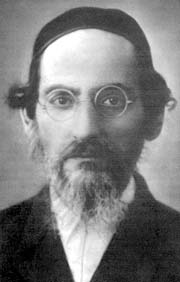 Rabbi Yehuda Ashlag Rabbi Yehuda Ashlag Isaac Nachman Steinberg Isaac Nachman Steinberg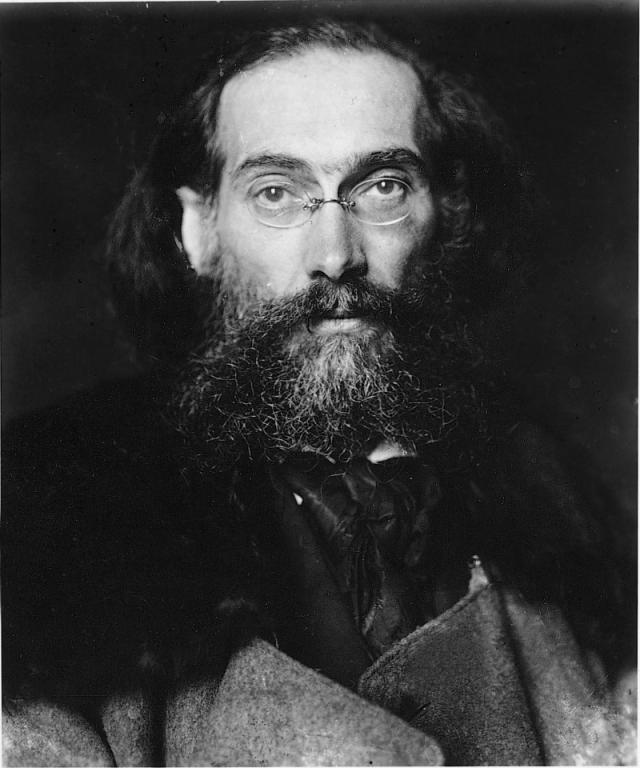 Gustav Landauer (7 April 1870 – 2 May 1919) was one of the leading theorists on anarchism in Germany at the end of the 19th and the beginning of the 20th century. He was an advocate of social anarchism and an avowed pacifist. In 1919, during the German Revolution, he was briefly Commissioner of Enlightenment and Public Instruction of the short-lived Bavarian Soviet Republic. He was killed when this Republic was overthrown. Gustav Landauer (7 April 1870 – 2 May 1919) was one of the leading theorists on anarchism in Germany at the end of the 19th and the beginning of the 20th century. He was an advocate of social anarchism and an avowed pacifist. In 1919, during the German Revolution, he was briefly Commissioner of Enlightenment and Public Instruction of the short-lived Bavarian Soviet Republic. He was killed when this Republic was overthrown.Many people of Jewish origin, such as Emma Goldman, Alexander Berkman, Martin Buber, Murray Bookchin and Noam Chomsky have played a role in the history of anarchism. However, as well as these anarchists of Jewish origin, there have also been specifically Jewish anarchist movements, within the Yiddish-speaking communities of Eastern and Central Europe, and the Western cities to which they migrated, from the late nineteenth century until the Second World War. All the members of the first anarchist group in the Russian Empire, which was formed in 1903 in Białystok, were Jews. Yiddish-speaking Jews participated to the International Anarchist Congress of Amsterdam in 1907.  Emma Goldman Mug Shot, 1901 Emma Goldman Mug Shot, 1901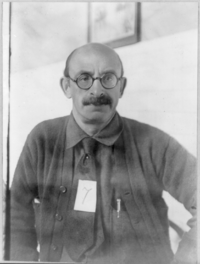 Alexander BerkmanJewish anarchist movements Alexander BerkmanJewish anarchist movements tended to stress the internationalist character of the movement, but many of them also supported their national culture and focused on specifically Jewish issues. Yiddish anarchist literature flourished since the 1880s till the 1950s and, on much smaller scale, till the 1980s; the last Yiddish periodical publication, Problemen was published in 1991. In addition to many original books, pamphlets, poems and essays, all the major works of Pierre-Joseph Proudhon, Mikhail Bakunin, Peter Kropotkin, Errico Malatesta, Henry Thoreau, Leo Tolstoy, Max Stirner and other anarchists were translated into Yiddish. Rudolf Rocker, a non-Jewish German anarchist, had studied Yiddish and authored many Yiddish books, pamphlets and articles. Most Jewish anarchists were anarcho-syndicalists, while a few others were individualist anarchists. 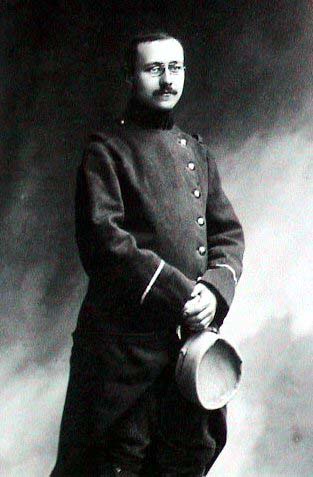 Johann Kaspar Schmidt (October 25, 1806 – June 26, 1856), better known as Max Stirner, was a German philosopher. He is often seen as one of the forerunners of nihilism, existentialism, psychoanalytic theory, postmodernism, and individualist anarchism. Stirner's main work is The Ego and Its Own, also known as The Ego and His Own (Der Einzige und sein Eigentum in German, which translates literally as The Individual and His Property). This work was first published in 1845 in Leipzig, and has since appeared in numerous editions and translations. Johann Kaspar Schmidt (October 25, 1806 – June 26, 1856), better known as Max Stirner, was a German philosopher. He is often seen as one of the forerunners of nihilism, existentialism, psychoanalytic theory, postmodernism, and individualist anarchism. Stirner's main work is The Ego and Its Own, also known as The Ego and His Own (Der Einzige und sein Eigentum in German, which translates literally as The Individual and His Property). This work was first published in 1845 in Leipzig, and has since appeared in numerous editions and translations.
His primary philosophical and political device (albeit minimalist) is described as the Union of Egoists. ( en.wikipedia.org/wiki/Union_of_egoists ) Different anarchist groups had different views on Zionism and the Jewish question. Bernard Lazare was a key figure in both the French anarchist movement and early Zionist movement. The later Territorialist movement, especially the Freeland League, under the leadership of Isaac Nachman Steinberg, was very close to anarchism. Some others, such as Martin Buber and Gershom Scholem, advocated non-nationalist forms of Zionism, and promoted the idea of creating a binational Jewish-Arab federation in Palestine. Many contemporary anarchists support the idea of what has been dubbed the " no-state solution". Noam Chomsky has said that, as an anarchist, he ultimately favours such a no-state solution, but, in the short term, feels a two-state solution is the best way out of the present conflict. 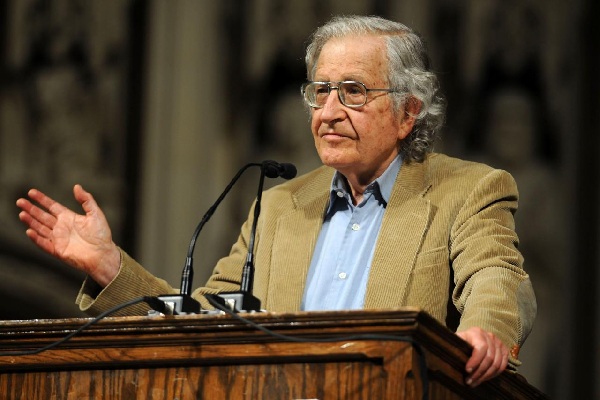 Avram Noam Chomsky (1928), American linguist, philosopher, cognitive scientist, historian, social critic, and political activist. Avram Noam Chomsky (1928), American linguist, philosopher, cognitive scientist, historian, social critic, and political activist. There was some intersection between the Jewish anarchist, Folkist and Territorialist movements. For example, Isaac Nachman Steinberg, a renowned Territorialist leader, held anarchist views. Most Jewish anarchists supported anarcho-syndicalism and communist anarchism, while a few were individualist anarchists. The small contemporary anarchist movement in Israel is very active in peace and Palestinian solidarity actions. Zionism Theodor Herzl, a key figure in the development of Zionism Theodor Herzl, a key figure in the development of ZionismThe aim of Zionism was to set up a secular state in the vicinity of the Biblical Land of Israel. Zionism, or the idea of a restored national homeland and common identity for the Jews, had already started to take shape by the mid-19th century, with Jewish thinkers such as Moses Hess whose 1862 work Rome and Jerusalem; The Last National Question argued for the Jews to settle in Palestine as a means of settling the national question. Hess proposed a socialist state in which the Jews would become agrarianised through a process of " redemption of the soil" which would transform the Jewish community into a " true" nation, in that Jews would occupy the productive layers of society rather than being an intermediary non-productive merchant class, which is how he perceived Jews in Europe. Hess, along with later thinkers such as Nahum Syrkin and Ber Borochov, is considered a founder of Socialist Zionism and Labour Zionism and one of the intellectual forebears of the kibbutz movement. Others like Rabbi Zvi Kalischer viewed a return to the Jewish homeland as the fulfillment of biblical prophecy through natural means. 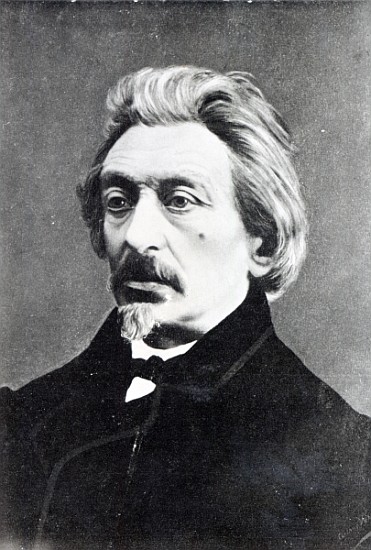 Moses Hess Moses HessAs the 19th century wore on, the persecution of the Jews in Eastern Europe where emancipation had not occurred to the extent it did in Western Europe (or at all) increased. Starting with the state-sponsored massive anti-Jewish pogroms following the assassination of Tsar Alexander II, through the bloody pogroms of 1903 to 1906 who left thousands of Jews dead and many more wounded, continuing with the Dreyfus Affair in France in 1894, Jews were profoundly shocked to see the continuing extent of anti-Semitism from Russia to France, a country which they thought of as the home of enlightenment and liberty. In reaction to the first, Judah Leib Pinsker published the pamphlet Auto-Emancipation on January 1, 1882. The pamphlet became influential for the Political Zionism movement. The movement was to achieve momentum under the leadership of an Austrian-Jewish journalist, Theodor Herzl, who published his pamphlet Der Judenstaat (" The Jewish State") in 1896. Prior to the Dreyfus Affair, Herzl had been an assimilationist, but after seeing how France treated its loyal Jewish subjects, he proposed building a separate Jewish state. In 1897 Herzl organized the First Zionist Congress in Basel, Switzerland, which founded the World Zionist Organisation ( WZO) and elected Herzl as its first President. After the state's establishment Zionism, in its various forms, would become the largest Jewish political movement, although more Jews would participate in the national politics of the countries in which they resided.  Judah Leib Pinsker Judah Leib Pinsker |
|
|
|
Post by pjotr on Dec 14, 2017 23:51:45 GMT 1
|
|
|
|
Post by pjotr on Dec 16, 2017 3:53:53 GMT 1
It seems that the Bund was wiped out by the Holocaust with the Polish Bundists who died in the Warsaw Ghettos and other Ghetto's, and in Auschwitz-Birkenau, Treblinka, Belzec, Sobibor, Chełmno and Majdanek, but the spirit of the Bund lived on in the Warsaw Uprising (1944) after the Warsaw Ghetto Uprising (1943) and in KOR (Komitet Obrony Robotników), Solidarność and Social Democratic parties in Western-Europe (PvdA, SPD, SPÖ and Parti Socialiste) where Holocaust survivors with a Bundist past moved to after the war.
The Zionism of Poale Zion, Hashomer Hatzair, Betar and other Zionist movements and parties were more popular and appealing after the war than Jewish autonomism, Diaspora jewish nationalism and Bundism and Folkism, but the Bund and the Folkspartei live on. Yidishkeyt (Yiddishkeit, the special Polish Diaspora Jewishness) and the principle of doikayt (“hereness”), the preservation of Jewish life and the struggle for liberation wherever Jews live lives on in Poland, especially today now the Polish jewish community is growing again and gaining consciousness.
|
|
|
|
Post by Bonobo on Dec 24, 2017 11:49:43 GMT 1
Great story. One could complete a uni History degree with it.  |
|
|
|
Post by pjotr on Dec 27, 2017 16:09:53 GMT 1
Bonobo, I posted and wrote a lot in the Bund thread which I posted due to the significance in the Pre-war Polish jewish world (inside the Polish Jewish Community) and the Polish politics as a whole, because the Bunds struggle with Endecja, Sanacja regime, the Polish communists (who attacked Bund demonstrations, strikes, schools and youth meetings) and Polish Zionists. In the political perspective of that time the Bund were leftwing Social Democrats, Jewish Patriots, leftwing nationalists ( en.wikipedia.org/wiki/Left-wing_nationalism ), autonomists and fairly liberal for socialists in that time. I have sympathy for them, because they were Polish jews (I have Polish jewish family, so there lies a link), because they were democrats (they were anti-Stalinist and anti-Communist), because they cooperated with the Polska Partia Socjalistyczna (that is the pre-war Polish organisation I feel very close too, despite it's Polish nationalism, which I consider to be Patriotism - I am extremely tolerant, lenient and forgiving for some mistakes the PPS made - I am Pro PPS, even more Pro PPS than I am Pro Bund, because I have a great sympathy for the Bund). Before you get a wrong impression my critical point of views of the Bund are the following: - How large my admiration is for their organisational skills and preservation of the Yiddish language and culture, in the same time the Bund leaders and activists created a Jewish secular pillar next to the Jewish Orthodox and the Zionist pillars in the Polish society. The lack of assimilation or integration in the Polish society created distance with the Assimilated Polonist Jews -a minority of the Polish jews- and it hindered the cooperation between Yiddish language speaking Jewish workers and Polish language Polish workers of the Polska Partia Socjalistyczna. - The Bund with their fierce anti-Zionism opposed a democratic direction in politics. I am not a zionist, but respect people who are or want to be a zionist (Jewish zionists, Christian Zionists and Hindu zionists for instance). For me Jewish autonomism is more logical, but I have friends and acquaintances who are Zionists. And I know people who are very critical towards Israel and Pro-Palestinian without being anti-semitic. - The Bunds Marxist side and fierce leftwing socialism is not my cup of tea. In their class struggle within the jewish community in Poland they attacked Jewish capitalists, factory owners, employers, rightwing Jewish politicians, jewish bankers and the jewish high class. I am not against the jewish high class and patricians (elite) of pre-war Poland, because Jewish industrialists, employers, bankers, businessmen and factory owners contributed to the Polish economy and helped the Polish jewish workers and middle class. Again, that is just my personal opinion. - In a time of great danger for the Polish jews and for the Polish Roman-Catholics the Bund put to much energy in fighting the Zionists. The German and Austrian nazi's soon would unleash their genocidal war on Poland, and the Sovjet Stalinists and their Polish henchmen would cotribute to the genocidal time with their Marxist-Leninist attrocities towards Polish Roman-Catholics and Polish jews too (both Polish jewish and Polish catholic family of mine died and ended up in the Russian Gulag due to Stalins policies. A Polish jewish officer from my family was killed in Katyn and his young son died fighting in the Warsaw Ghetto Uprising. The wife of the Polish officer and the mother of the young Katyn AK fighter was the sister of my Polish grandmother. A Polish Roman-Catholic woman who married a Polish jew). For instance, the (rightwing) Revisionist Zionist youth movement 'Betar' had a strong presence in Poland. Betar promoted and promotes Jewish leadership on university campuses as well as in local communities. The Bund and the leftwing Zionist movements like the socialist Poale Zion, Hashomer Hatzair (Mordechai Anielewicz, the commander of the Żydowska Organizacja Bojowa [ŻOB] in the Warsaw Ghetto was a Hashomer Hatzair member and former Betar member, he cooperated in the Warsaw Ghetto Uprising with Marek Edelman who was a Bundist), Dror could have cooperated by forming a strong united Polish jewish front against anti-semitism, fascism, nazism and Stalinism. But the Bund lost a lot of energy in competing with Poale Zion and Hashomer Hatzair on the left. - Due to the polarization and empathis on Judaism the Bund failed in building a strong united leftwing Peoples Front in a time that it was very important to form a such a United Leftwing Front with the Centrolew (Center-Left) ((Polish People's Party "Wyzwolenie", Polish People's Party "Piast", National Workers' Party, Polish Socialist Party, Stronnictwo Chłopskie and Polskie Stronnictwo Chrześcijańskiej Demokracji). Also in a time of difficulties for the Polish jewish population (poverty, hunger and unemployment) the Bund could have been more pragmatic and could have made some compromises and aligned itself with the Polska Partia Socjalistyczna and the Polskie Stronnictwo Ludowe "Wyzwolenie". From the other side the Polska Partia Socjalistyczna didn't want to be associated to closely with the Bund, due to the Jewishness (Yidishkeyt, Yiddishkeit, Jidyszkajt), the "żydowskość" of the Bund. Being Jewish was a handicap in the Europe of that time in which people thought in ethnical, cultural and political clans like Roman-Catholic, Orthodox Christian (Ukrainian), Lutheran, Calvinist, Methodist, Marxist-Leninist or secular Humanist Social-Democratic or liberal atheist or agnostic. In my opinion the Poles are very stubborn in their Polishness and I have witnessed Polish nationalism, Polish Patriotism, Polish xenophobia and Polish anti-semitism inside Poland and outside Poland. How? In Poznań , Warszawa and Kraków. But thank god I have had more positive memories than negative memories about Poland, Polish people and Polish Roman-Catholicism. I think one problem in Poland is that the ethnic majority of ethnic Western-Slav Roman-Catholic Poles is so large that Poles aren't used to minorities, different religions, different ethnicities and thus a pluriform society. Today I just hope that the Polish democratic nature, the spirit of freedom, pluriformity, tolerance, respect for minorities (which should be part of a parliamentary democracy and a democratic civil society), respect for competing or different opinions and a certain democratic quality in the democratic institutions will guarantee the democratic nature of Poland. I believe that the present day Polish administration moves to much in a direction Poland went to after the death of Józef Piłsudski in may 1935. In April 1935, shortly before Piłsudski's death, a new constitution (the " April Constitution") was adopted, which supported Sanation's principal ideas: a strong centralized state with a presidential system of government. Piłsudski died soon after, however, and Sanation faced some serious internal problems. Eventually it devolved into three separate movements: - The Sanation Left (Lewica sanacyjna, formed around Walery Sławek), which sought a modus vivendi with the opposition); - The Castle (Zamek, formed around President Ignacy Mościcki, who resided in the Warsaw Castle — hence the movement's name), which became the center; and - The Sanation Right (Prawica sanacyjna, formed around Edward Rydz-Śmigły), which soon became virtually indistinguishable from the Camp of National Unity. (The OZN adopted 13 theses on the Jewish question. Modeled after the Nuremberg laws, they labelled Jews as a foreign element that should be deprived of all civil rights and ultimately expelled altogether. However, because the OZN was a political grouping without actual concrete political power, these laws remained theoretical and were never implemented or enforced in pre-war Poland.) The first of these Sanation movements soon lost much of its importance, but the other two continued the ideological struggle within the country until the outbreak of war. So in my opinion the present day Polish government looks like the Sanation Right (Prawica sanacyjna) or the 'Colonels regime' (1935-1939). After Piłsudski's death (1935), the hardliner "colonels", led by Walery Sławek, lost influence to the Castle faction of Ignacy Mościcki and Edward Rydz-Śmigły. Nevertheless, the " colonels' regime" and Sanation still dominated the Polish government in 1935–39 until the German invasion of Poland. Some scholars draw a distinction between the " Piłsudski period" (1926–35) and the "colonels' period, proper" (1935–39). From 1937 the colonels' new political front would be the Camp of National Unity (OZON). In that last period, the Polish government—a "dictatorship without a dictator"—in order to bolster its popular support, paradoxically adopted some of the nationalistic, anti-minority policies that had been opposed by Piłsudski and advocated by his most vocal adversaries, the National Democrats. I think that the time of the ' Colonels regime' (1935-1939) was a very difficult for Polish jews in general, because there was a Poles centric financial-economical policy of 'Roman-Catholic poles by products of Roman-Catholic shops, stores and factories', discrimination of Jewish students at Polish universities and an anti-semitic climate due to rightwing reactionary chauvinistic conservative Roman-Catholic clergy (some priests and bishops), Nationalist politicians and anti-Jewish Polish workers, Middle class and high class. An ever-increasing proportion of Jews in interwar Poland lived separate lives from the Polish majority. In 1921, 74.2% of Polish Jews listed Yiddish or Hebrew as their native language; the number rose to 87% by 1931, contributing to growing tensions between Jews and Poles. Jews were often not identified as Polish nationals, a problem caused not only by the reversal of assimilation shown in national censuses between 1921 and 1931, but also by the influx of Russian Jews escaping persecution—especially in Ukraine, where up to 2,000 pogroms took place during the Civil War, an estimated 30,000 Jews were massacred directly, and a total of 150,000 died. A large number of Russian Jews emigrated to Poland, as they were entitled by the Peace treaty of Riga to choose the country they preferred. Several hundred thousand refugees joined the already numerous Jewish minority of the Polish Second Republic. The resulting economic instability was mirrored by anti-Jewish sentiment in some of the media; discrimination, exclusion, and violence at the universities; and the appearance of "anti-Jewish squads" associated with some of the right-wing political parties. These developments contributed to a greater support among the Jewish community for Zionist and socialist ideas, coupled with attempts at further migration, curtailed only by the British government. Notably, the "campaign for Jewish emigration was predicated not on antisemitism but on objective social and economic factors". However, regardless of these changing economic and social conditions, the increase in antisemitic activity in prewar Poland was also typical of antisemitism found in other parts of Europe at that time, developing within a broader, continent-wide pattern with counterparts in every other European country. Again I want to state that not all Poles were anti-semites, but many were. The Dutch author and journalist of Polish Jewish heritage Milo Anstadt said to me before her died that I shouldn't have pitty for the Pre-War Polish jews. We were not pitiable, a vulnerable, weak, defenseless minority. Anstadt told me that in many Polish towns and cities Polish jews formed the majority or were a large minority (like 1/3 of the population). Anstadt who kept feeling a Polish jew his entire life said; "We had our selfdefense units against the Endecja and Polish communists who attack us -us is the Bund-, we had our numbers and we were not people you could fool around with, but it was a fact that there was a wide spread anti-semitism and that many jews were extremely poor, lived under miserable life conditions and were unemployed). The period 1935-1939 were not as bad as the period 1939-1945 ofcourse, but it is a fact that the situation in several stages deteriorated during the twenties, thirties and forties for the Polish jews. Mind you that I understand and have empathy for the poor Polish Roman-Catholics and some ethnic Germans and Ukrainians in Pre-war Poland too. It was not an easy time for any of these ethnic minorities in Poland. The Polish communists, socialists and leftwing peasent party Polskie Stronnictwo Ludowe "Wyzwolenie" had succes and a larger following, because many Polish little peasents, land workers, factory workers and poor and unemployed Poles lived under extremely poor, miserable and desperate conditions. It were the crisis years, and Poland felt the constant tension of the German and Sovjet neighbours, Ukrainian nationalists and border troubles with the Lithuanians. I sometimes think that Polish Roman-Catholic farmers, workers and towns people (Middle class) distrusted the jews or were anti-semitic due to the fact that Yiddish was an un-Polish German sounding language, that the Jewish Orthodox faith, culture and society was alien to them with the Hebrew alien language and Alphabet, and the fact that Yiddish was written with Hebrew letters too. So Polish Roman-Catholics couldn't understand Yiddish and Hebrew nor could they read or understand the Hebrew looking posters, advertisements and newspapers of the Yiddish and Hebrew language press. For some strange reasons some righwting Zionists admired the far right anti-semitic Poles and copied some of their Falangist, National Democratic organisational and propaganda tools. Fact is also that in that difficult time of the twenties, thirties and forties many Polish Roman Catholics and Polish jews lived side by side as neighbors, colleagues, partners (in mixed relationships), as soldiers and officers in the same Polish army and as workers in the Polish workers movements. Do you believe that in the todays Polish climate Poland could return to the multi-ethnic ideas of Józef Piłsudski, who favored a multicultural Poland - a home of nations, recognizing numerous ethnic and religious nationalities? Next to the Bund the Polska Partia Socjalistyczna had Jewish leaders and activists too, like Herman Lieberman, Stanisław Mendelson and others. Mny Polish jews played a significant role in the fight for Poland's independence during World War One; around 650 Jews joined the Legiony Polskie formed by Józef Piłsudski, more than all other minorities combined. Prominent Jews were among the members of KTSSN (The Temporary Coordinating Commission of Confederated Independence Parties [Polish: Komisja Tymczasowa Skonfederowanych Stronnictw Niepodległościowych], KTSSN), the nucleus of the interim government of re-emerging sovereign Poland including Herman Feldstein, Henryk Eile, Porucznik Samuel Herschthal, Dr. Zygmunt Leser, Henryk Orlean, Wiktor Chajes and others.  Herman Lieberman (1870 – 1941) was a Polish lawyer and socialist politician and minister of justice of the Polish government in Exile in London during the war. Herman Lieberman (1870 – 1941) was a Polish lawyer and socialist politician and minister of justice of the Polish government in Exile in London during the war. The grave of Herman Lieberman with the PPS logo on it. The grave of Herman Lieberman with the PPS logo on it.Cheers, Pieter |
|







